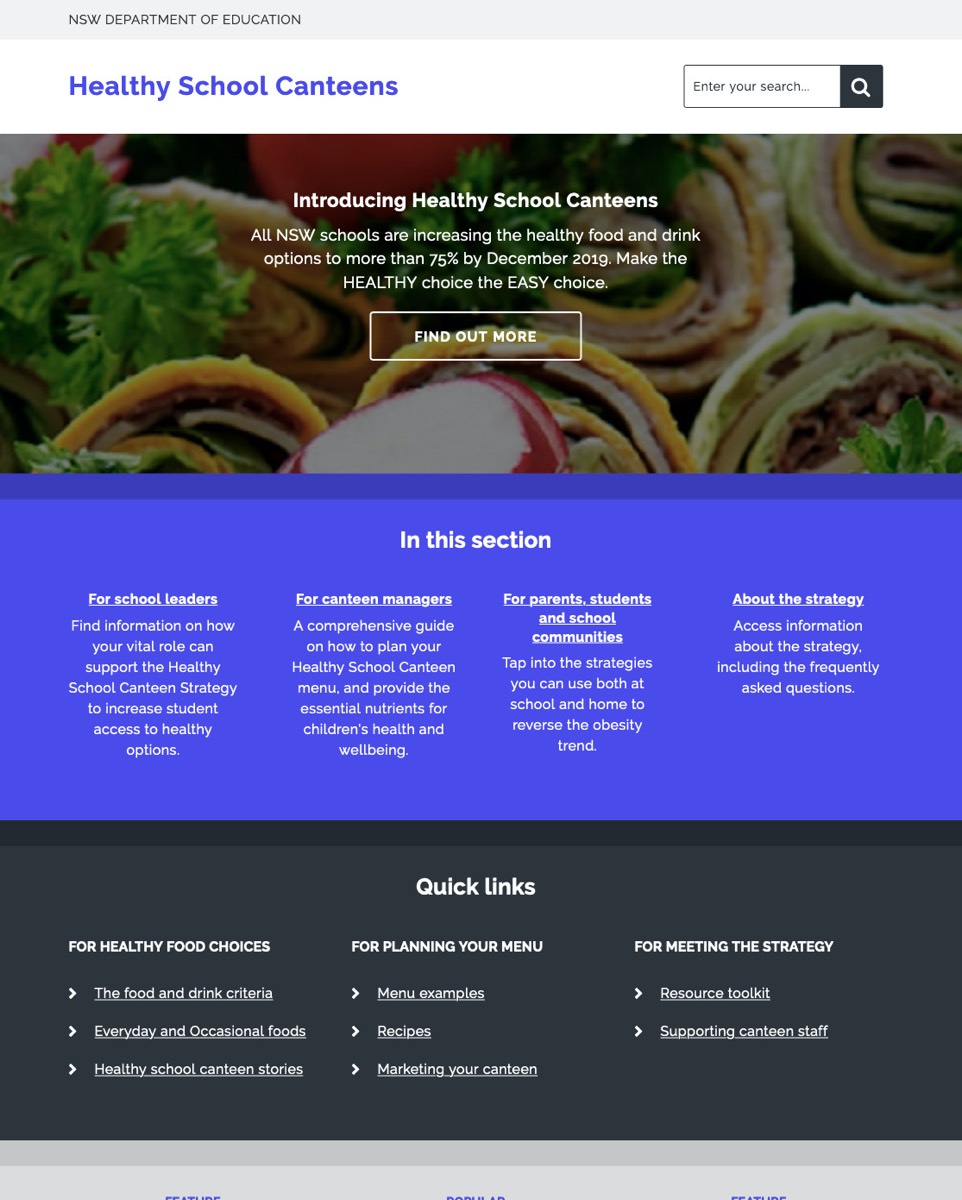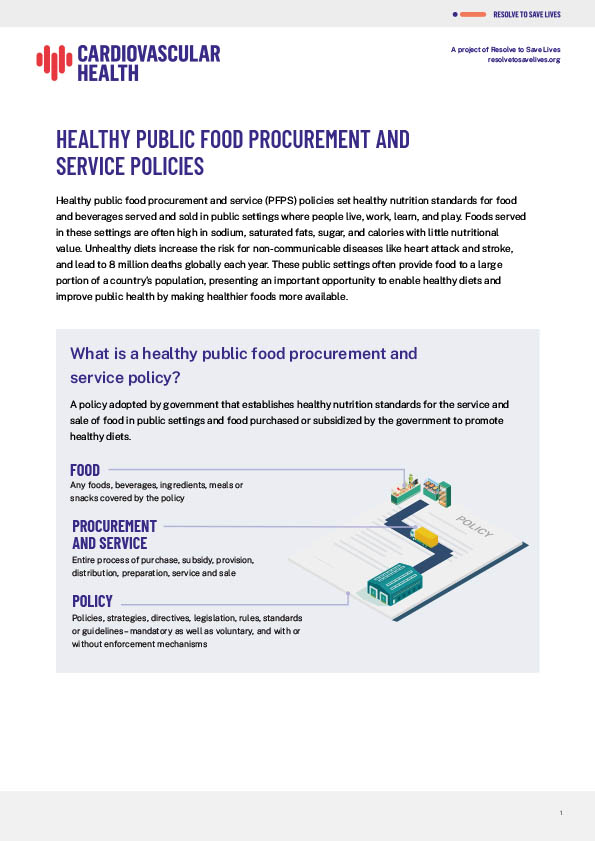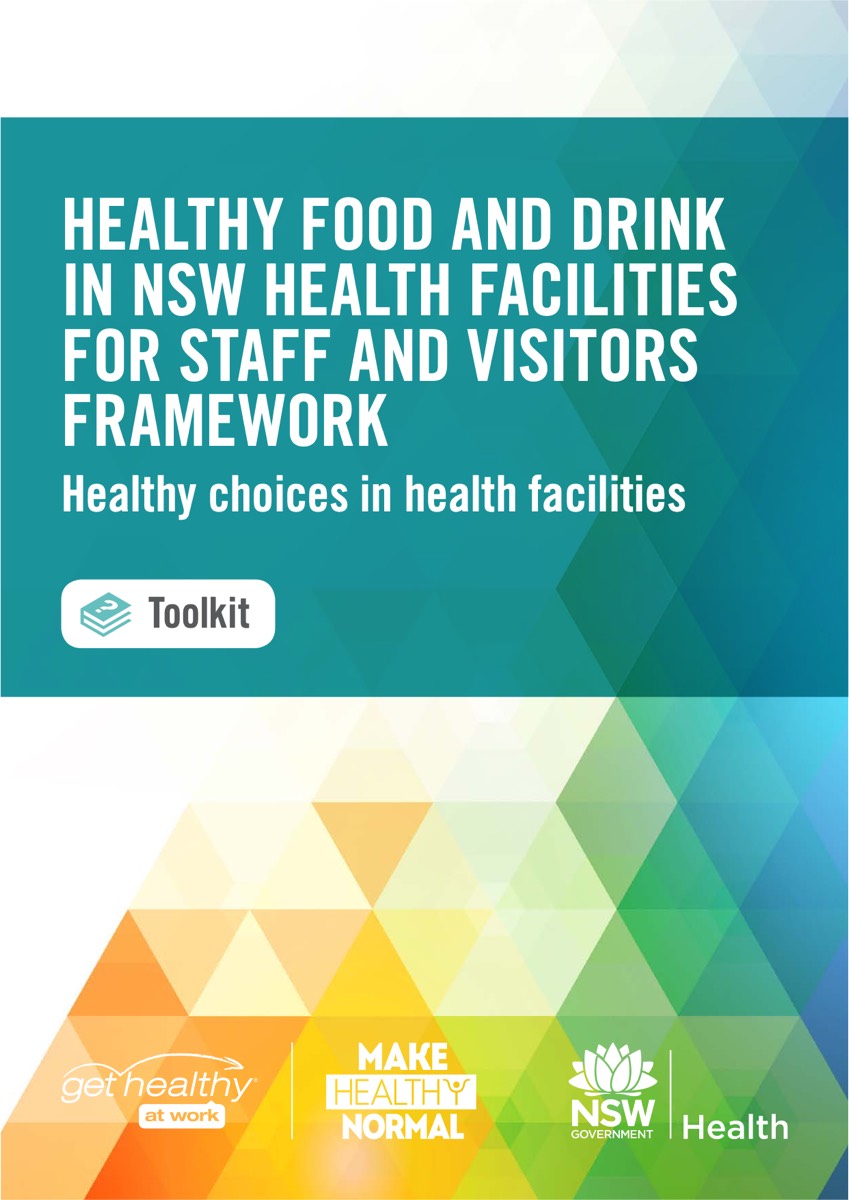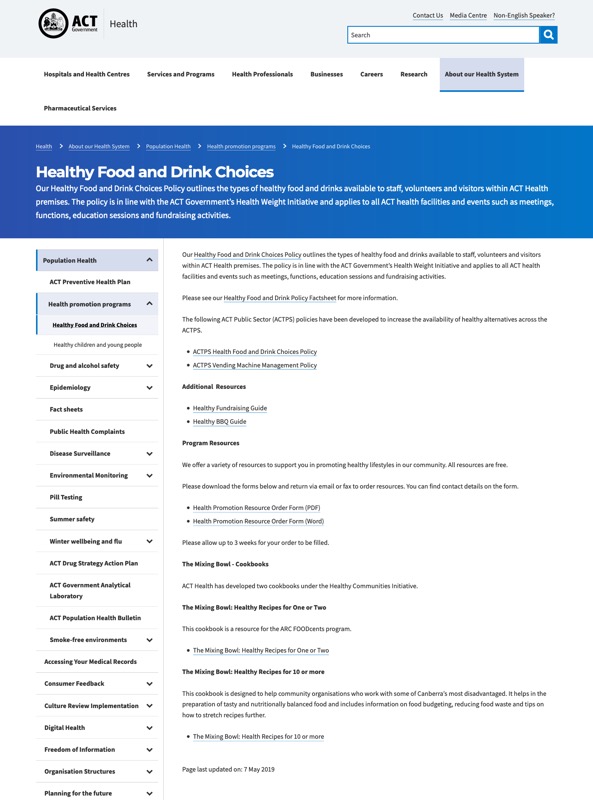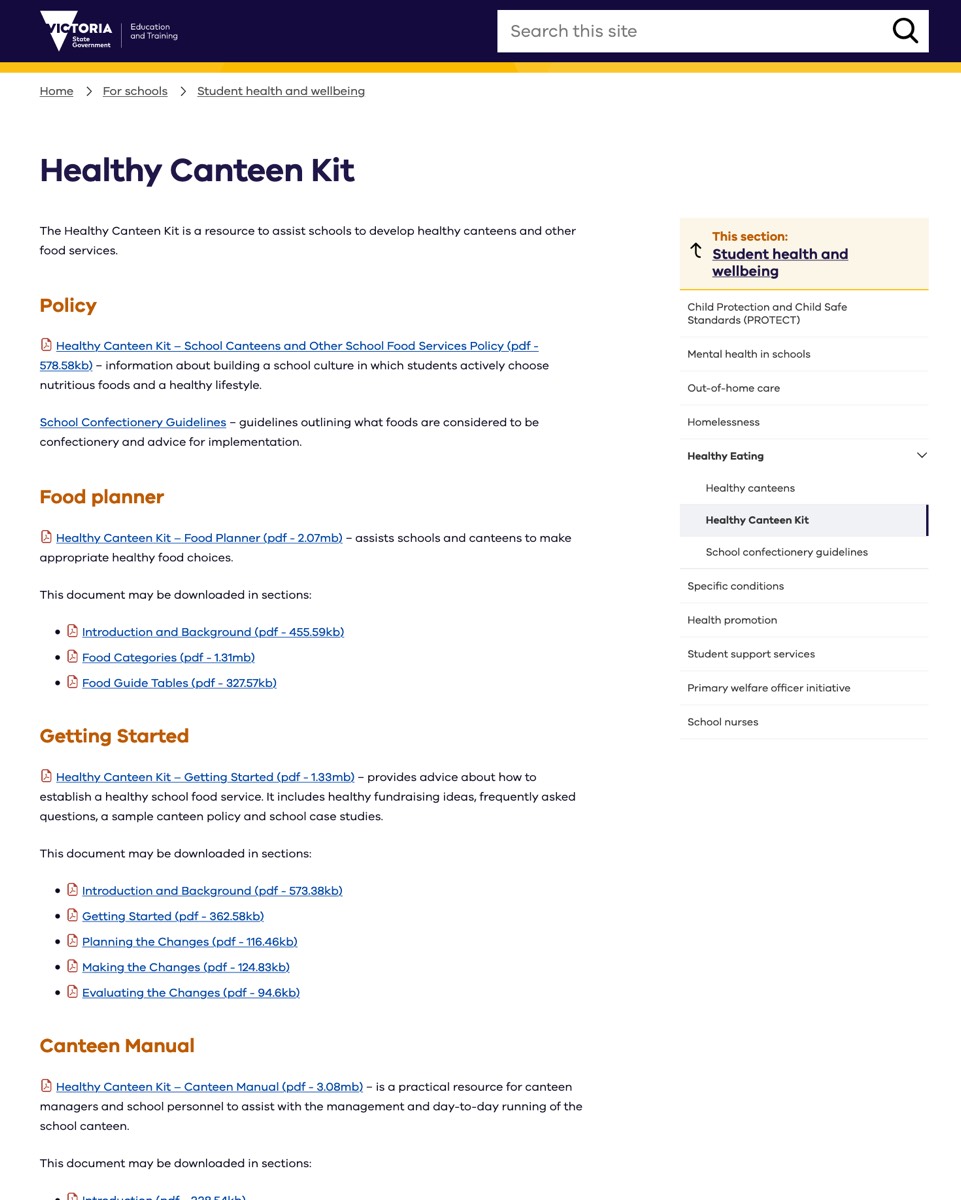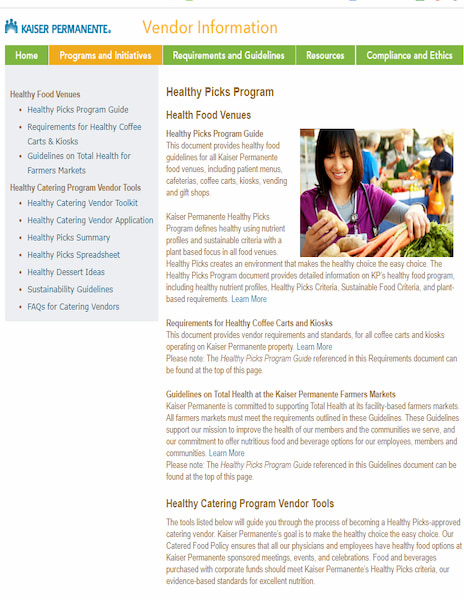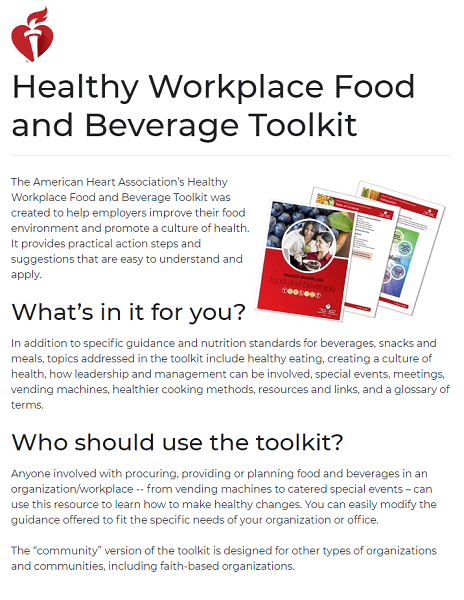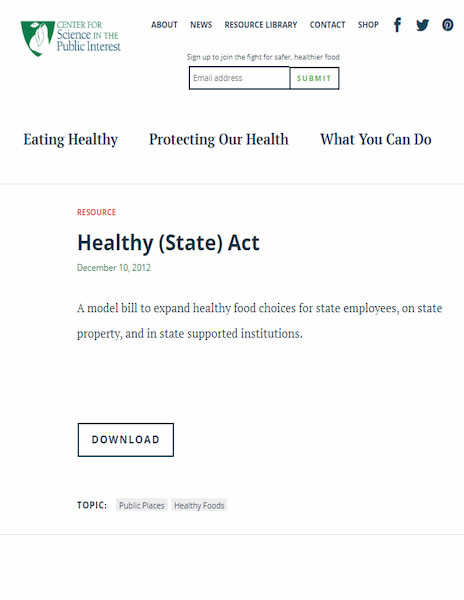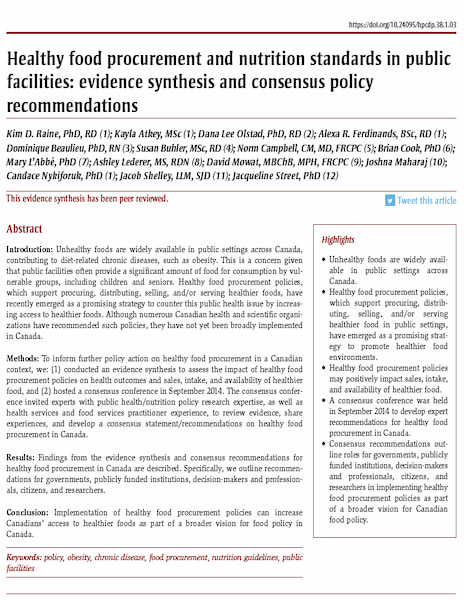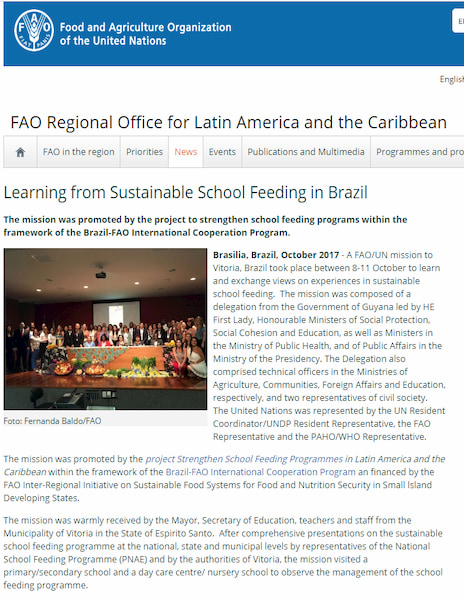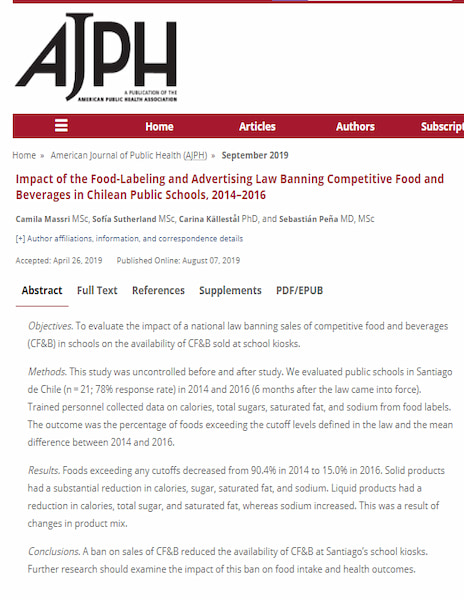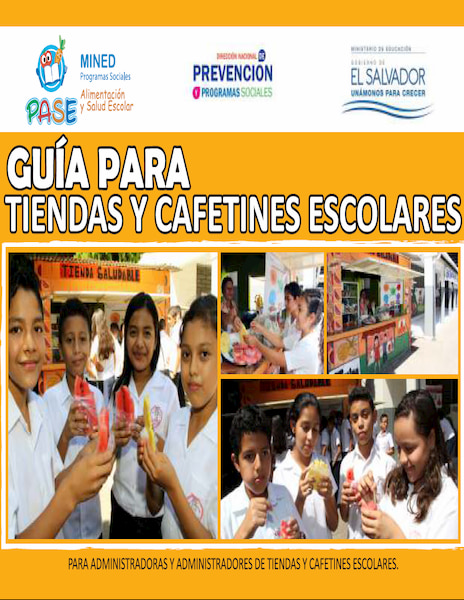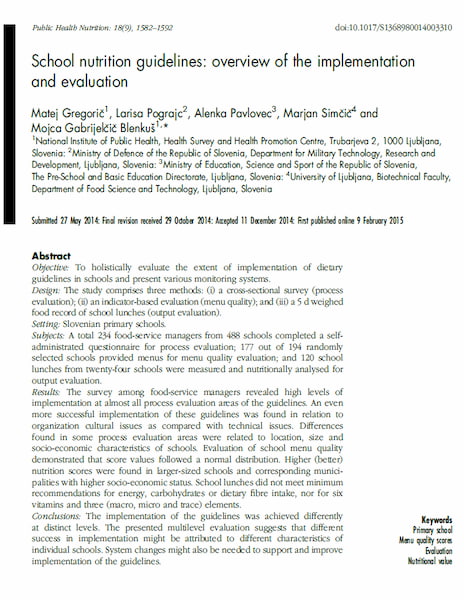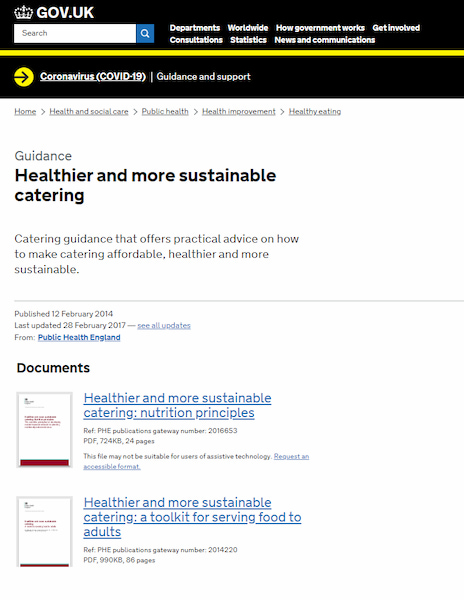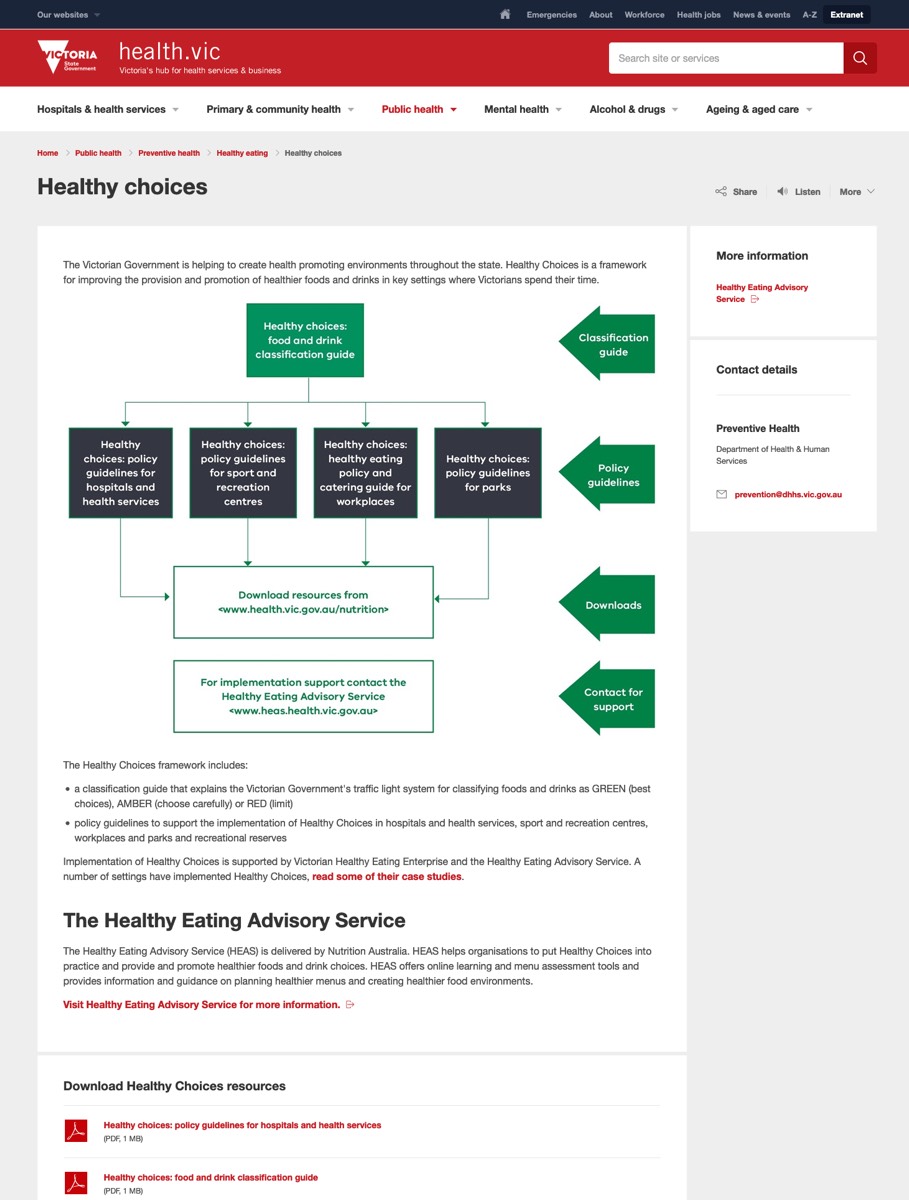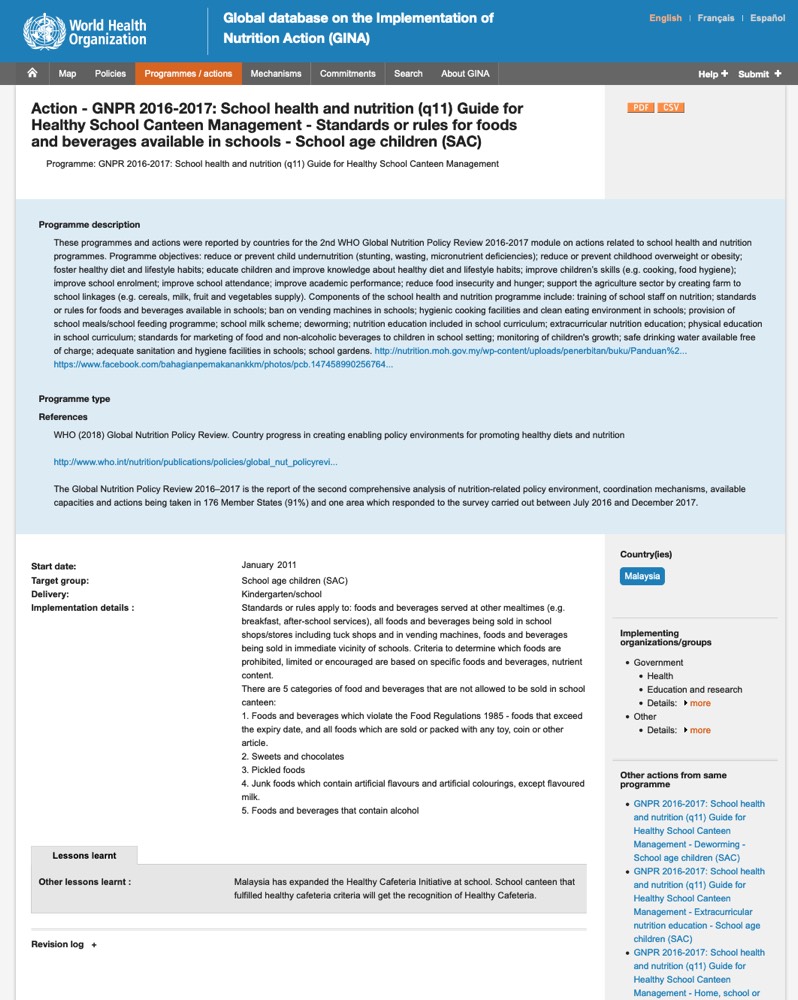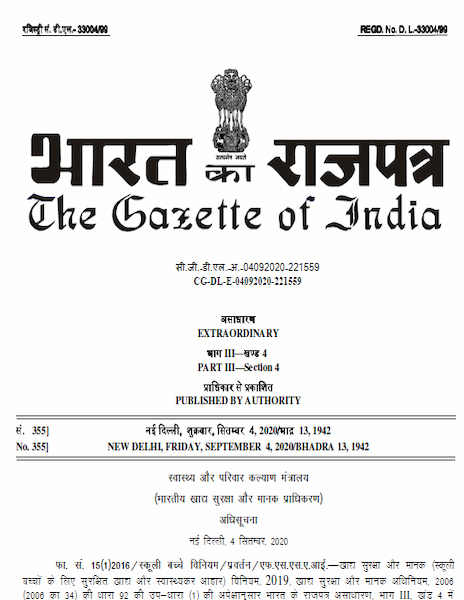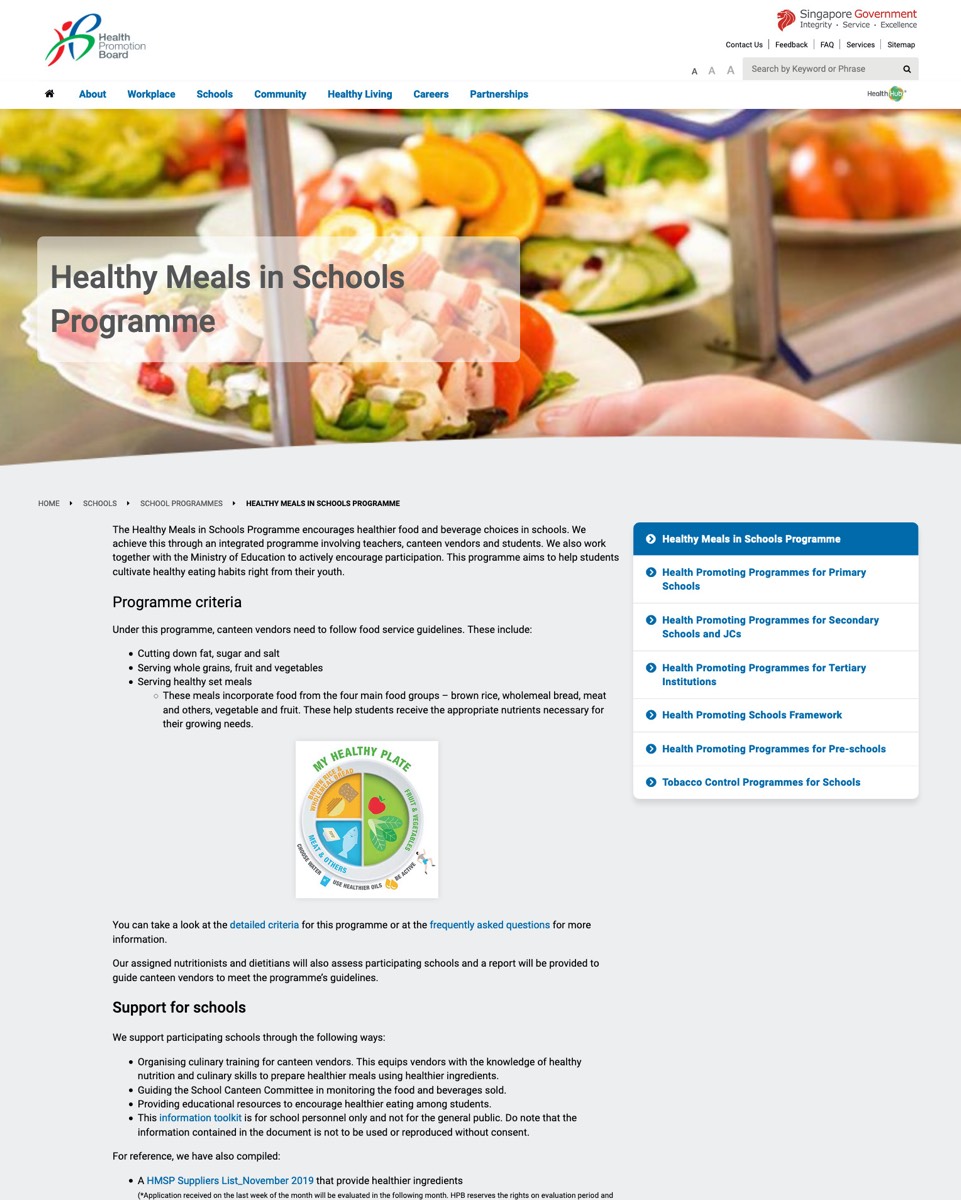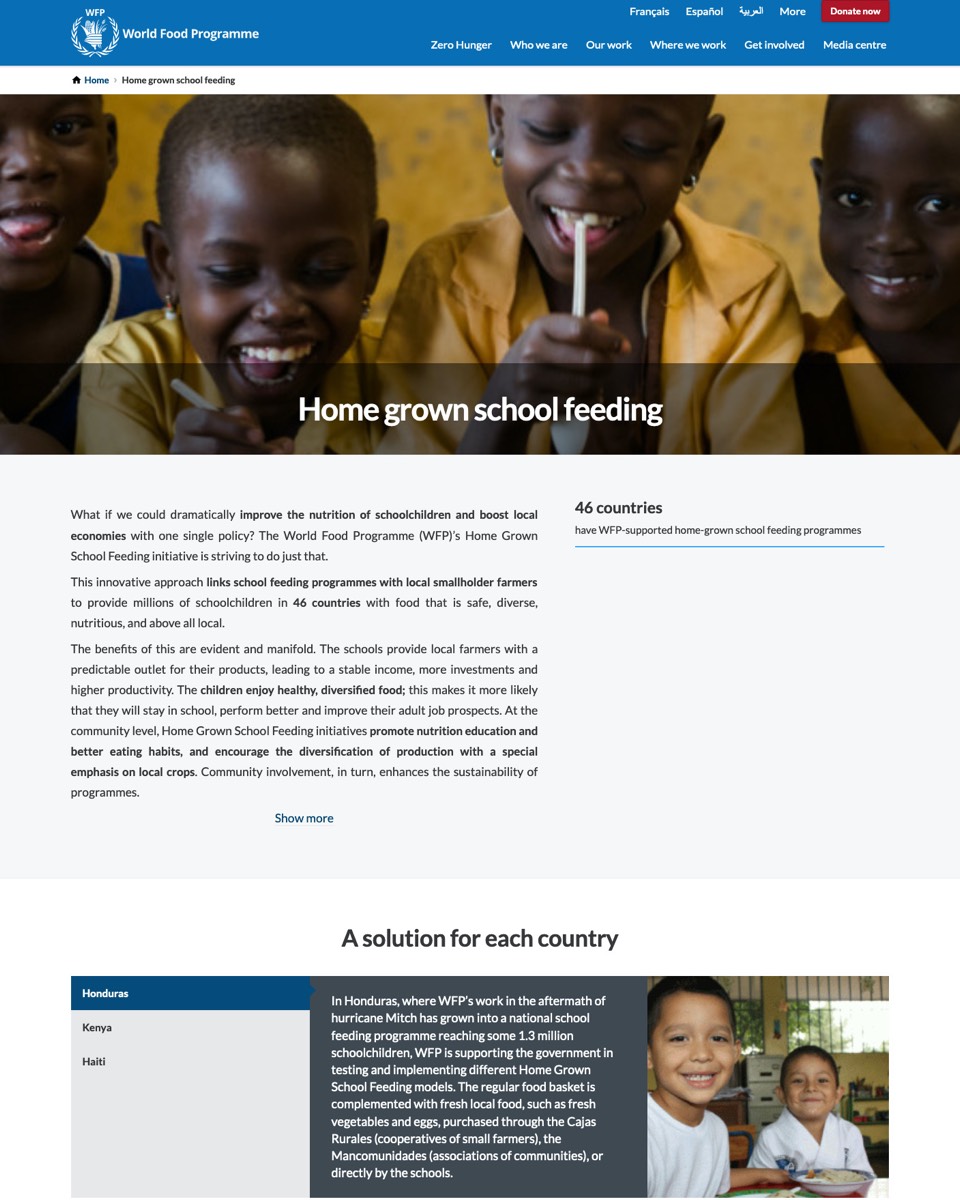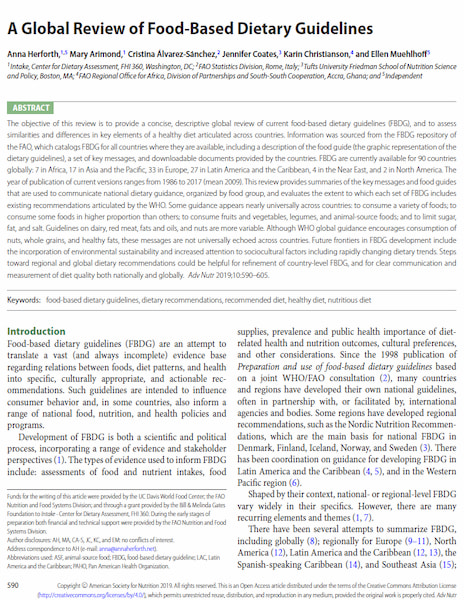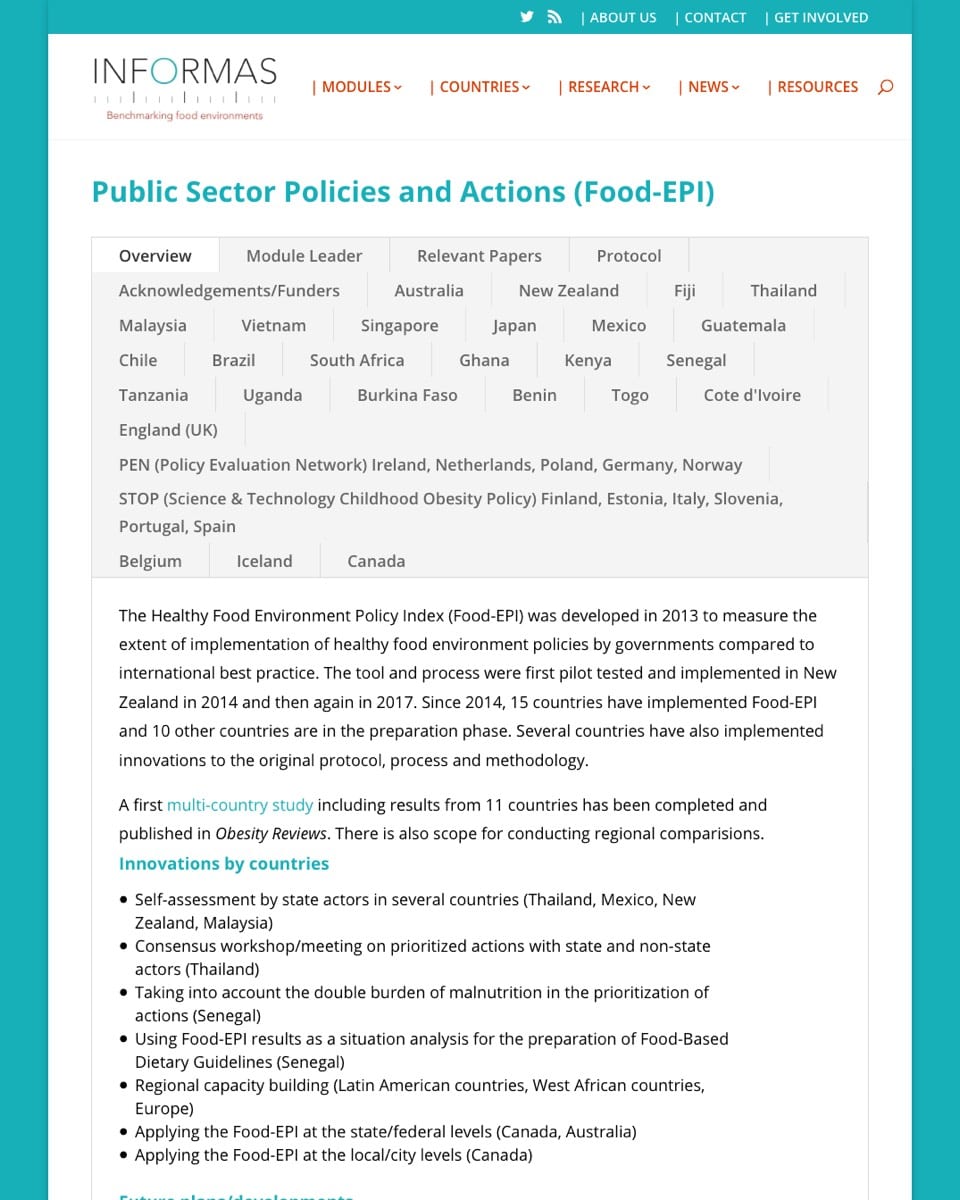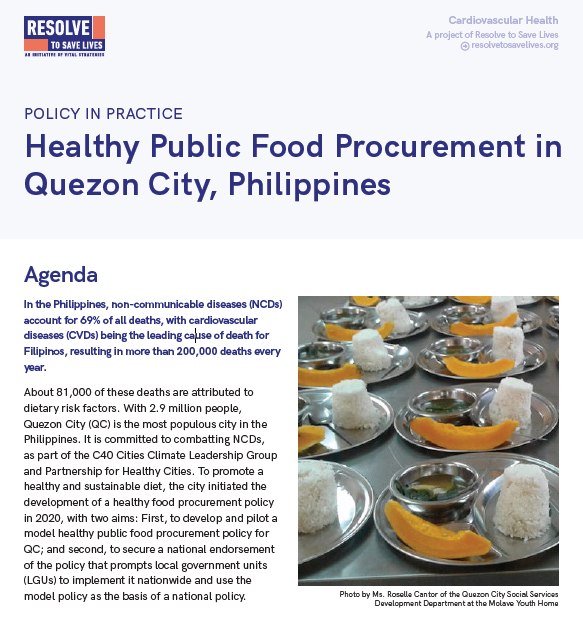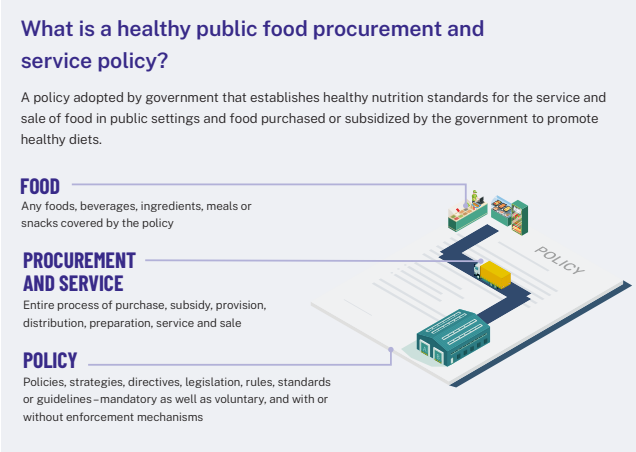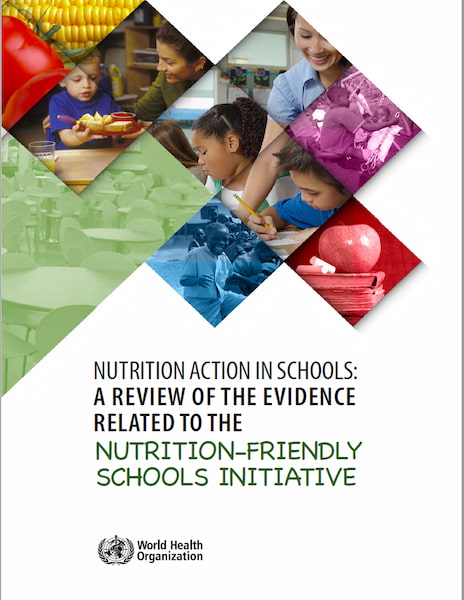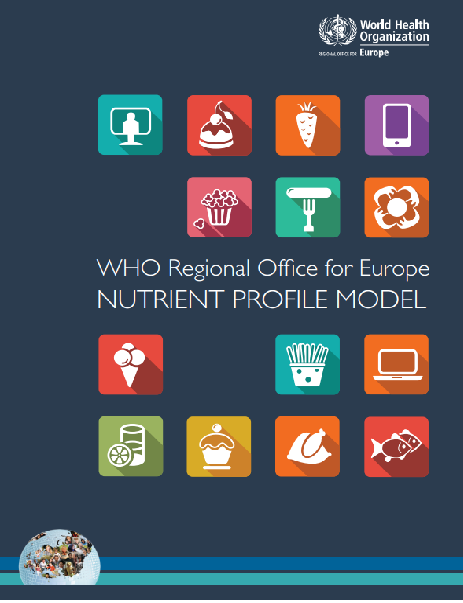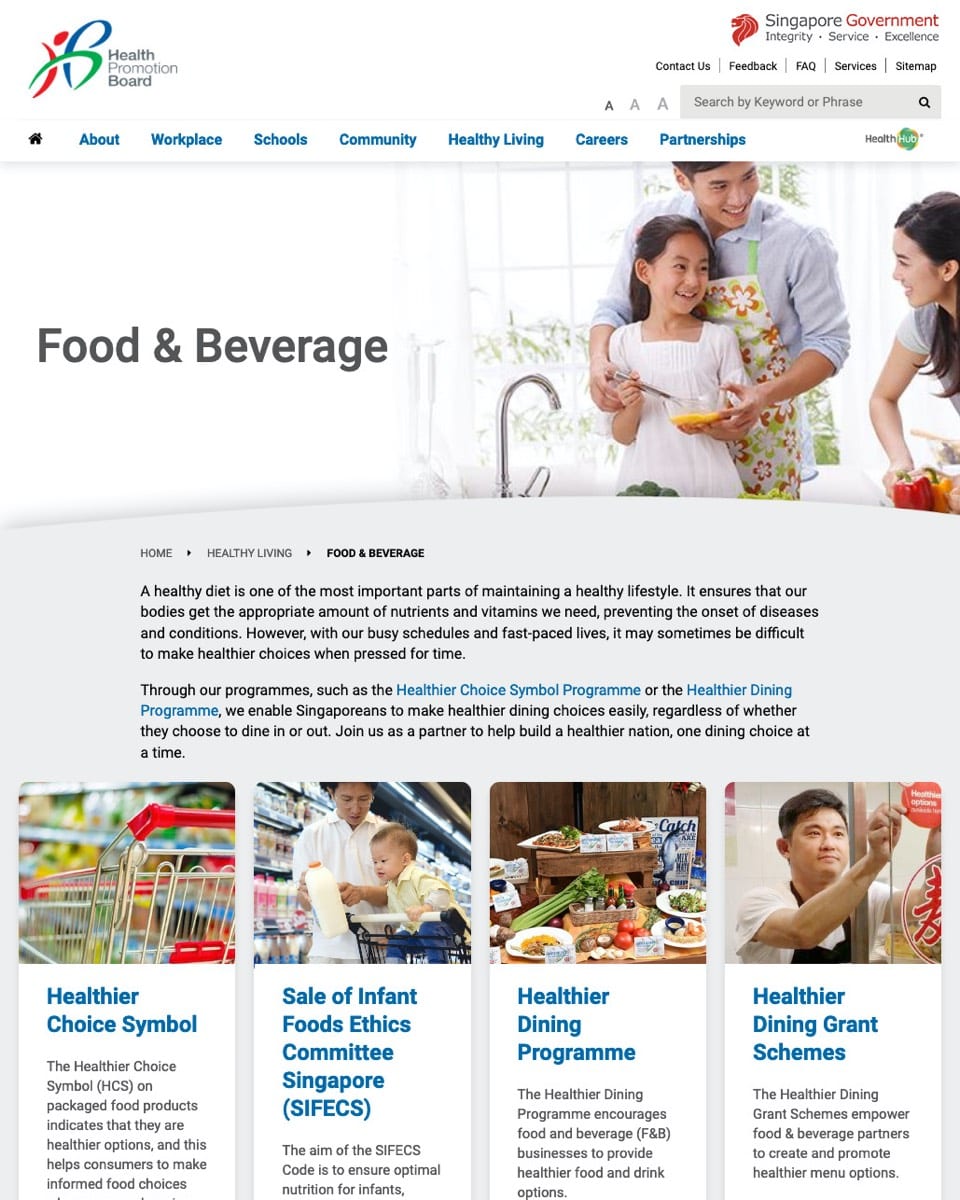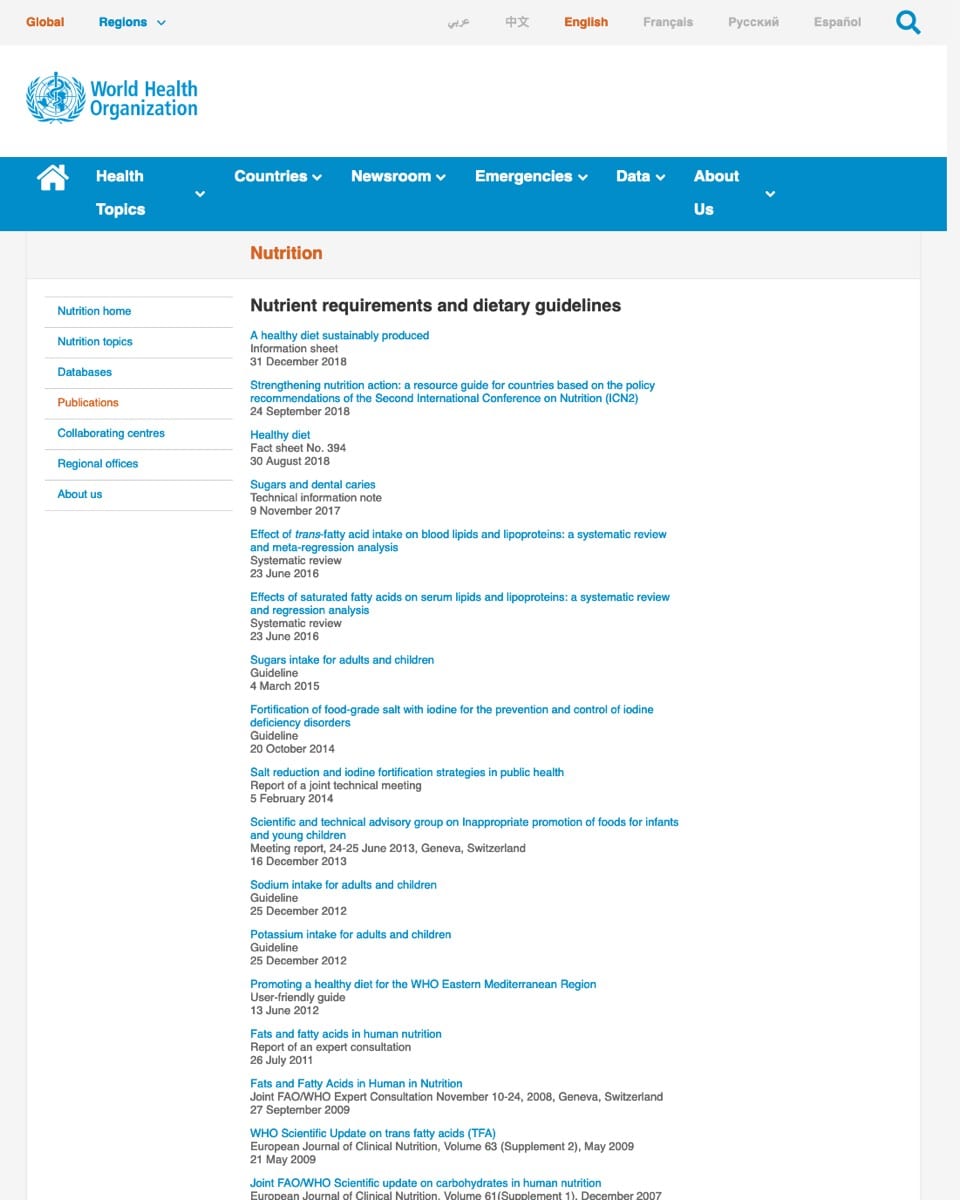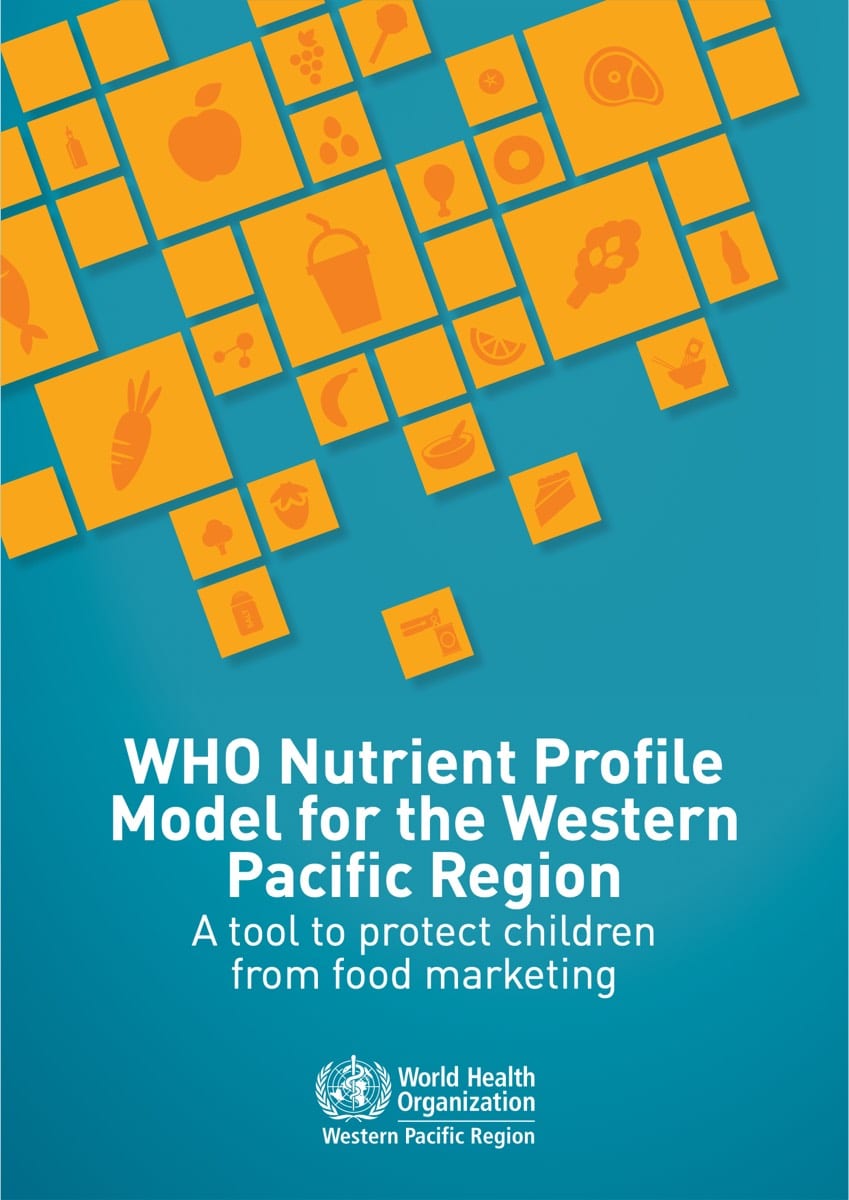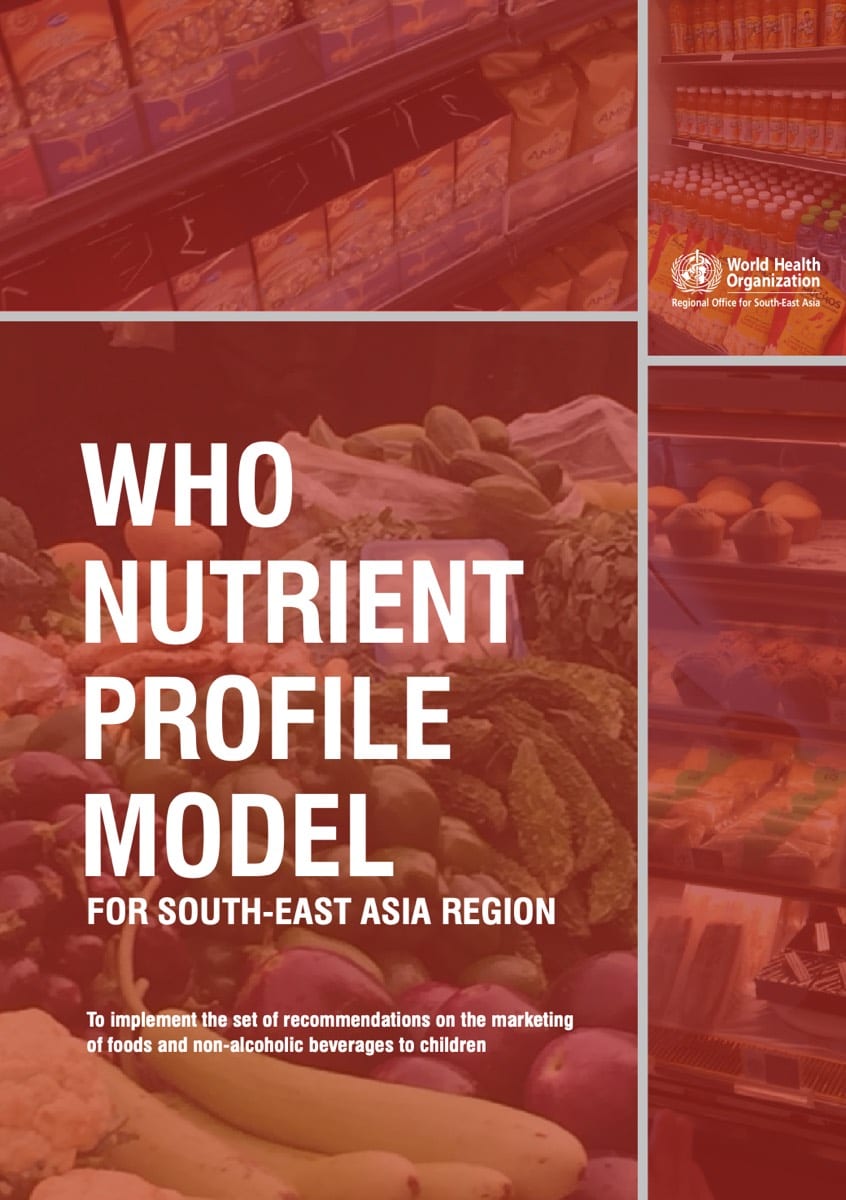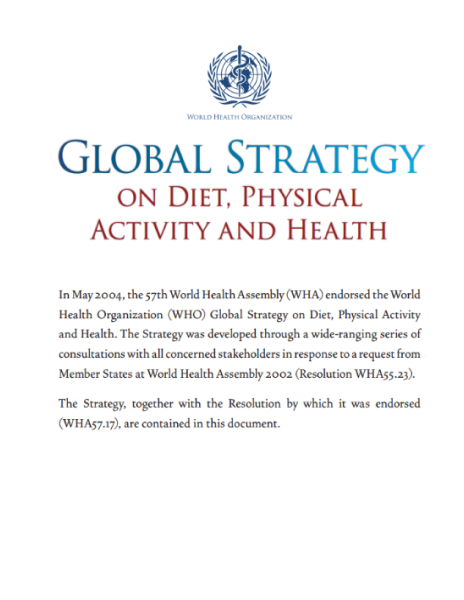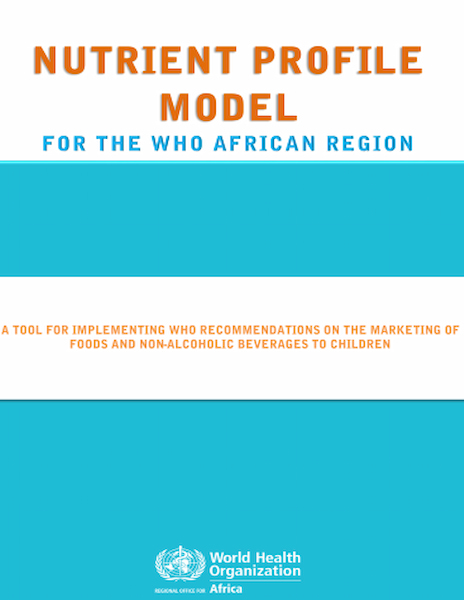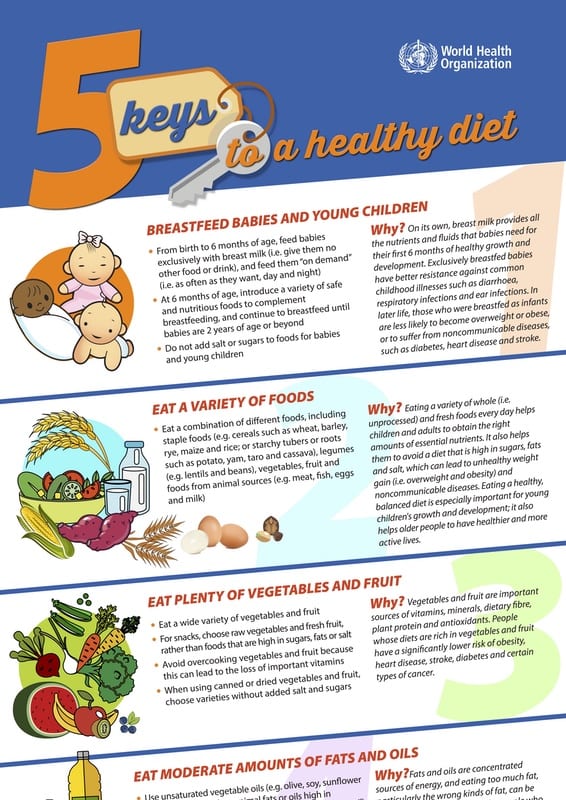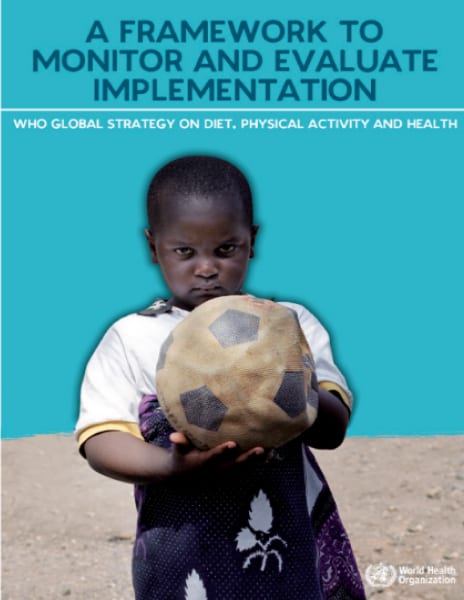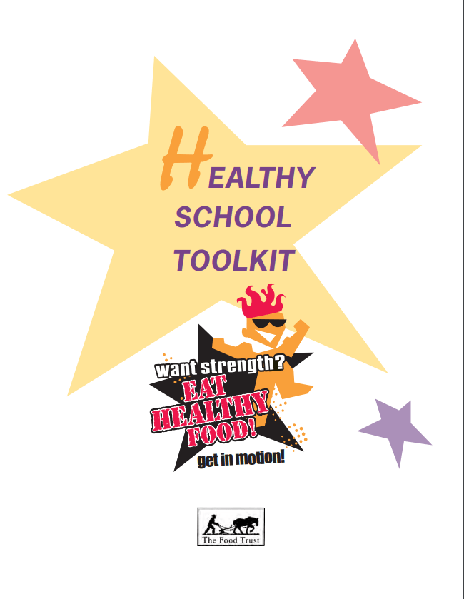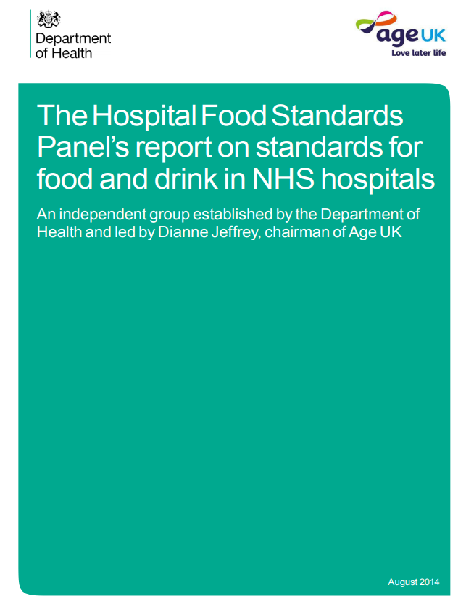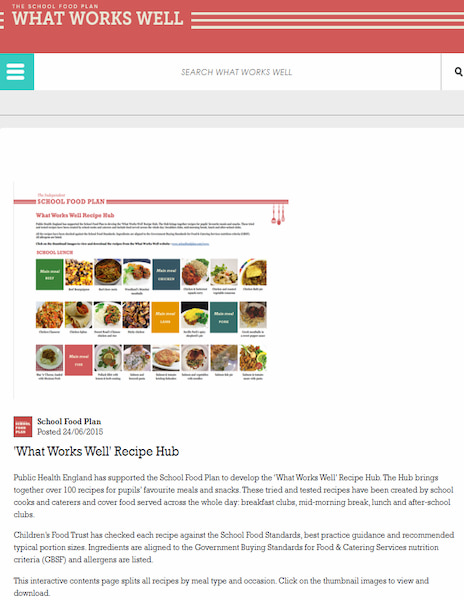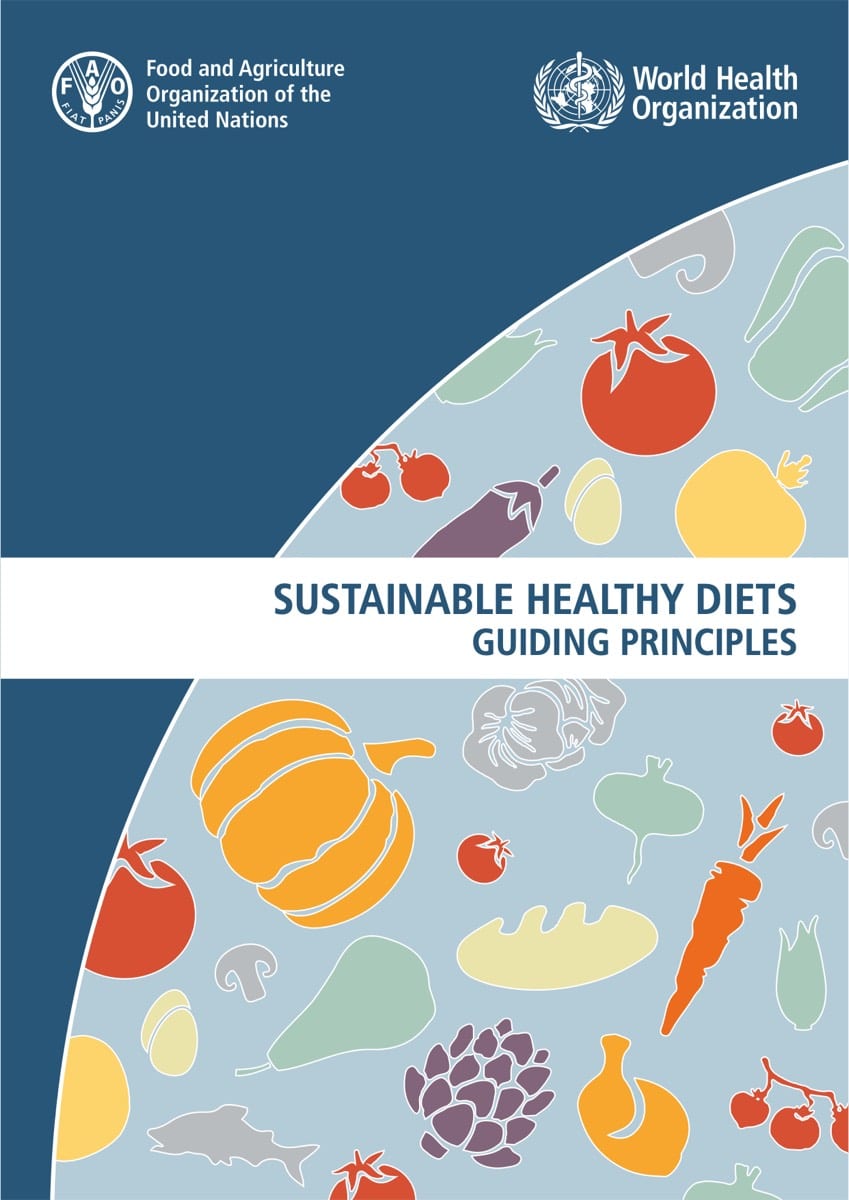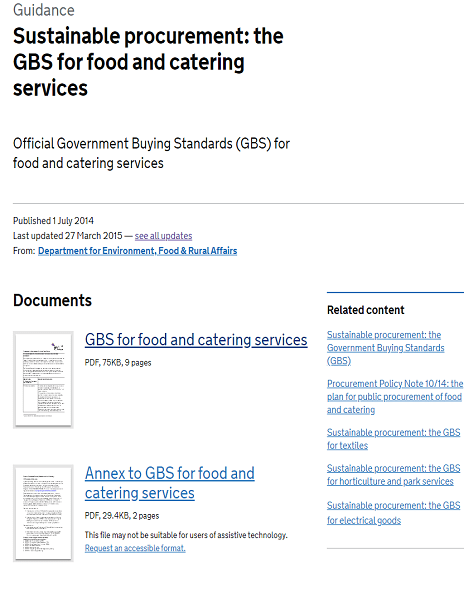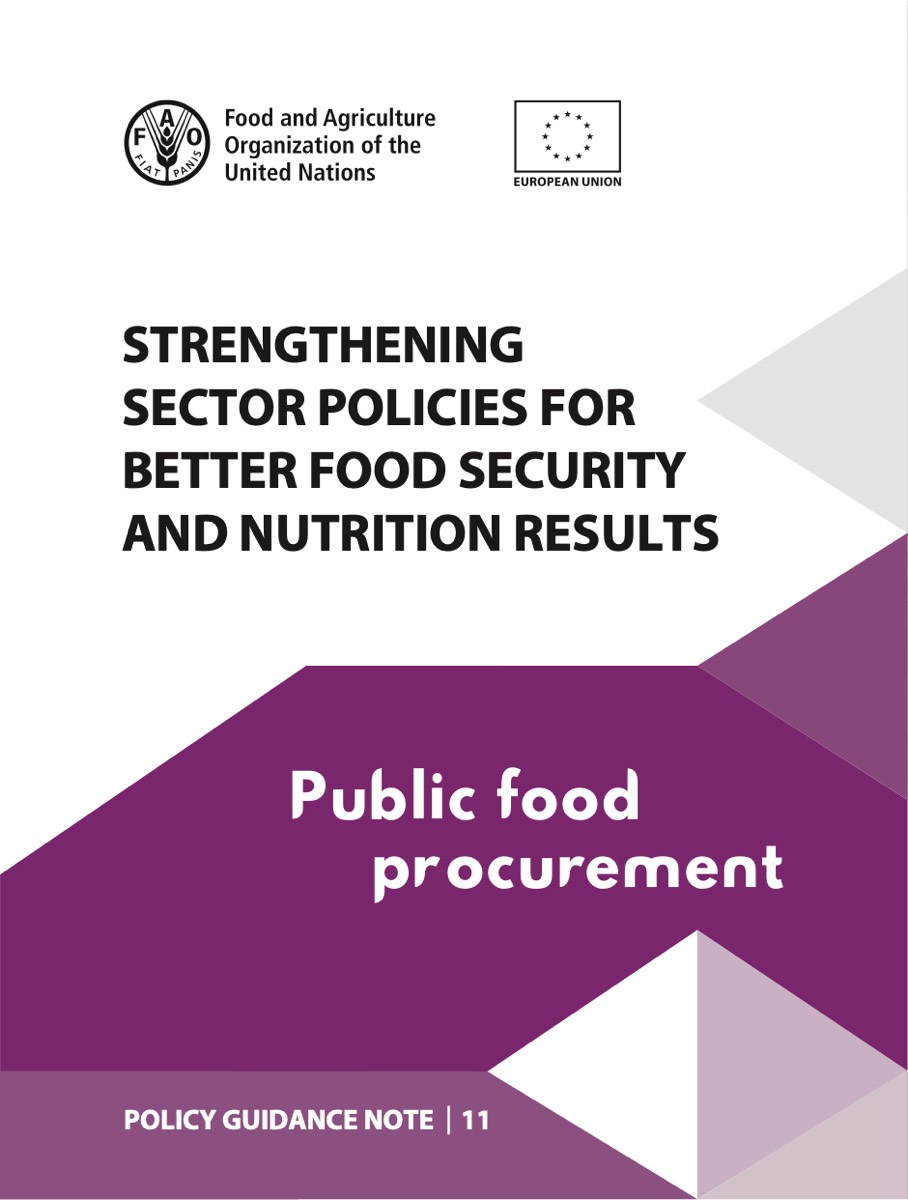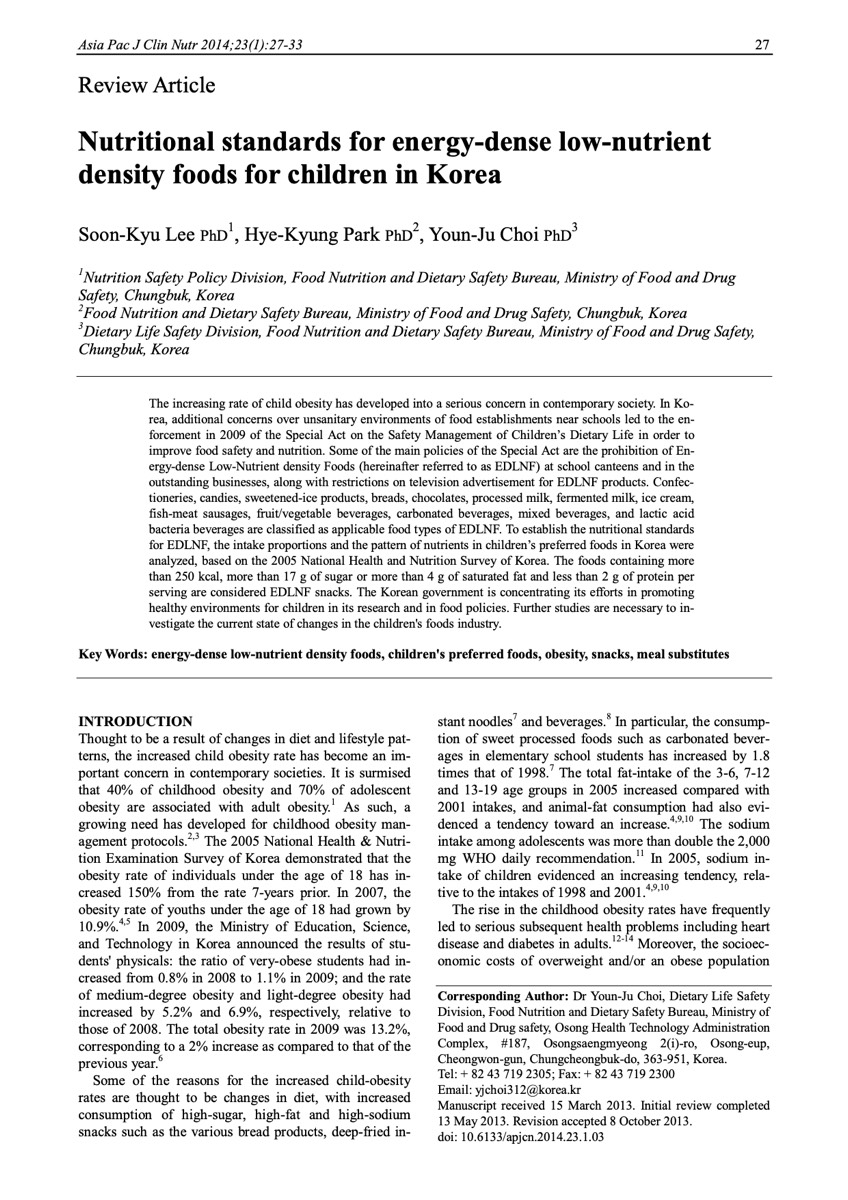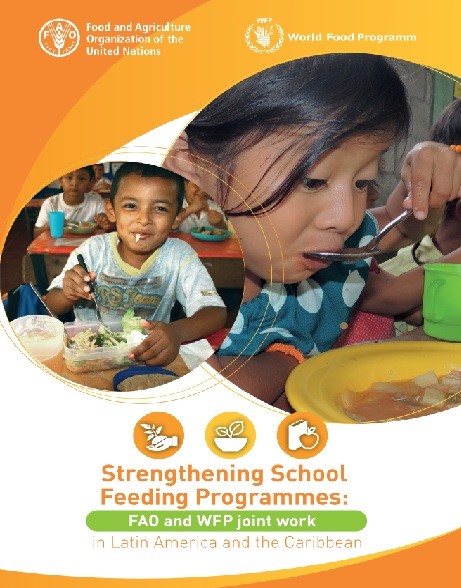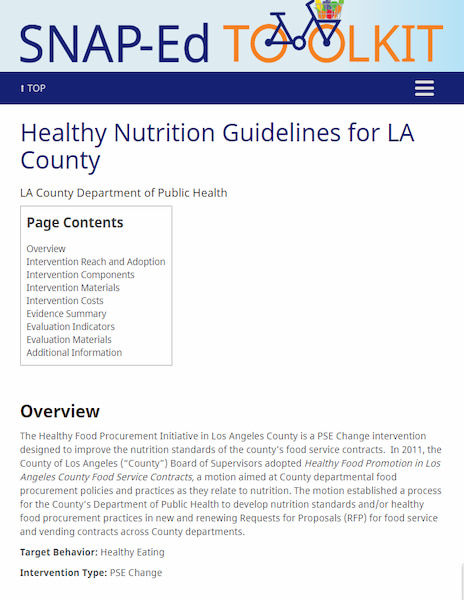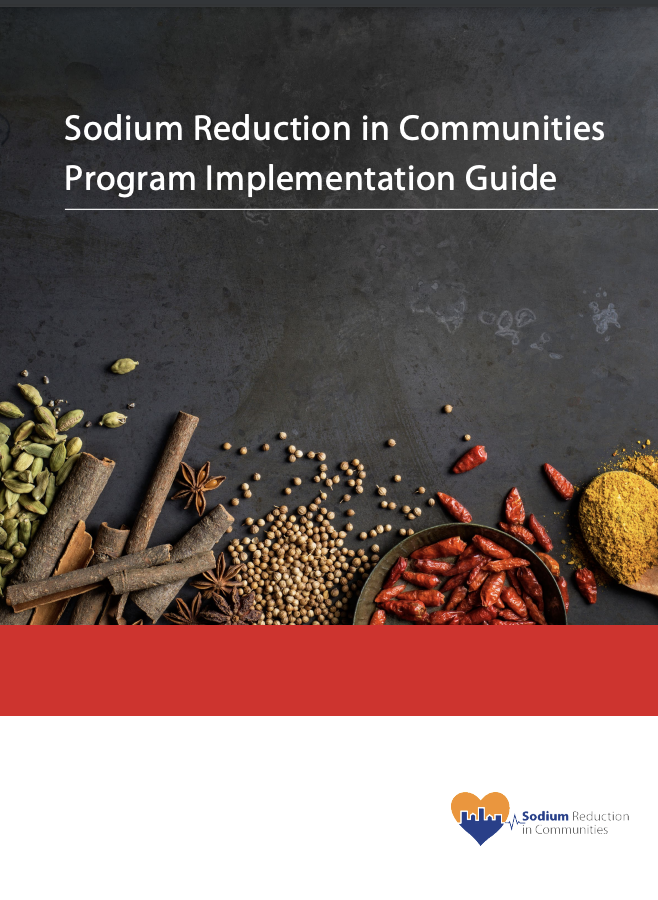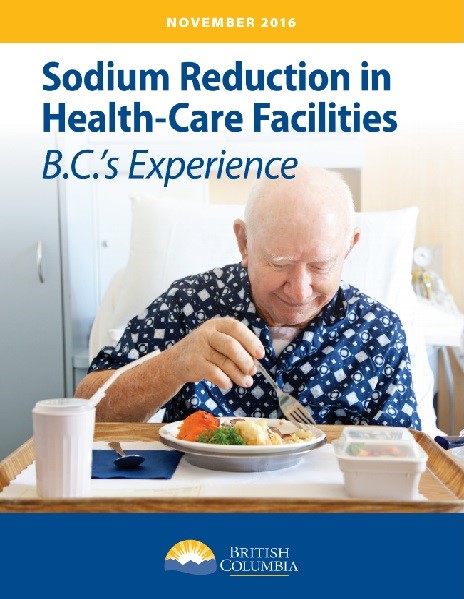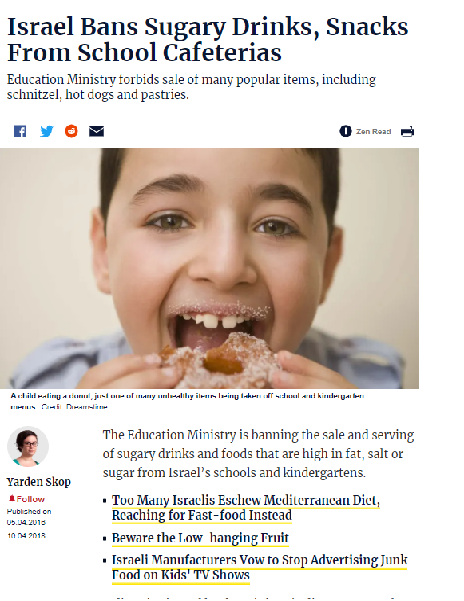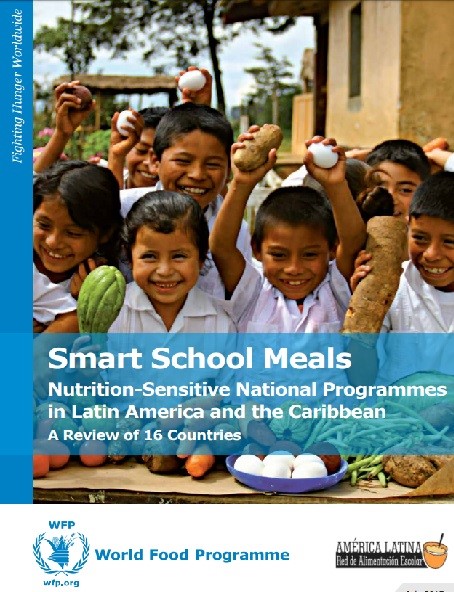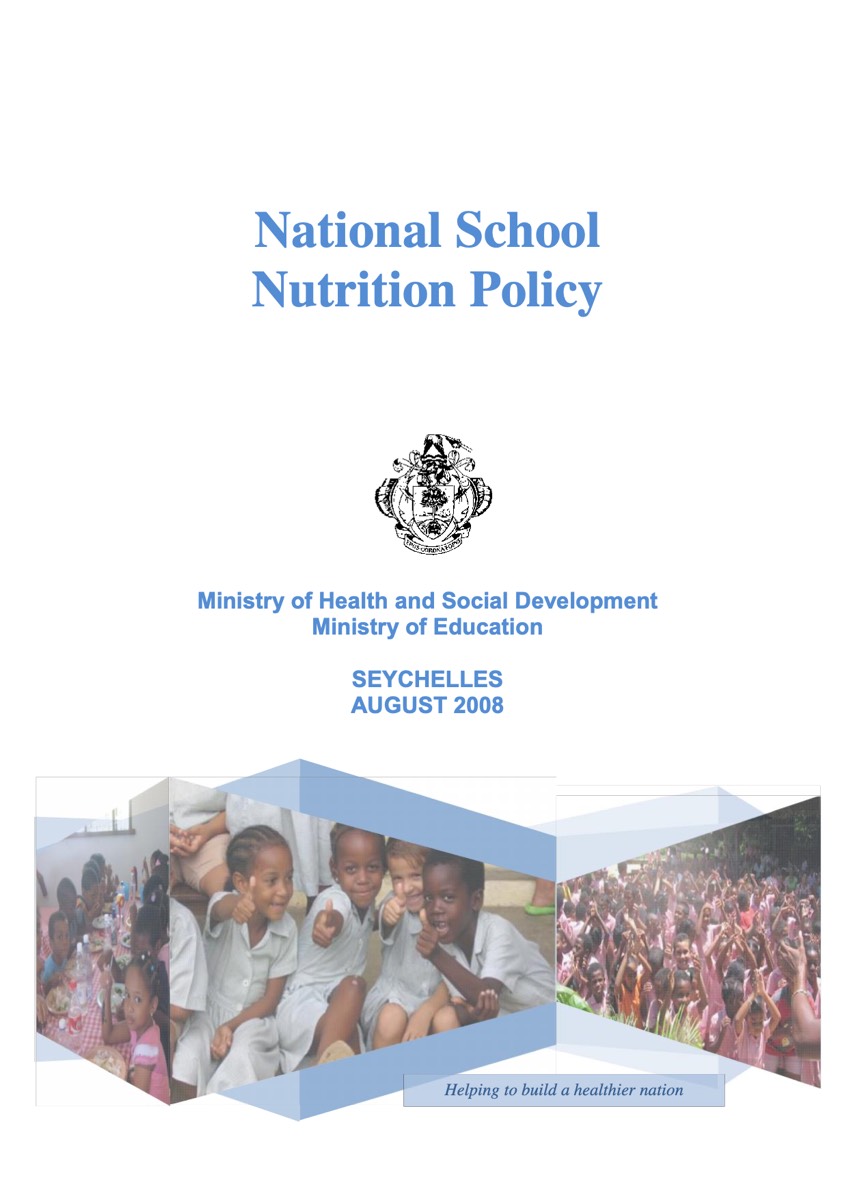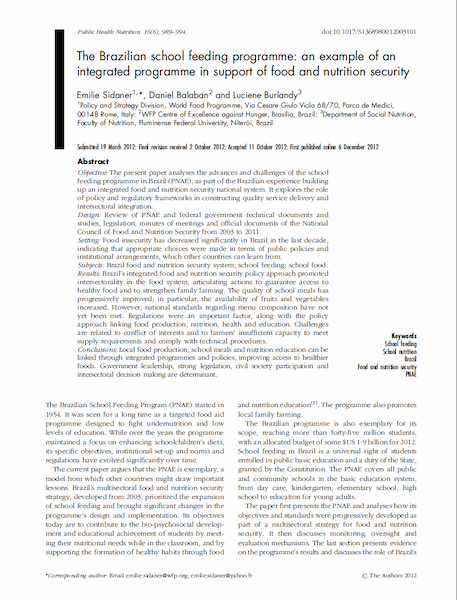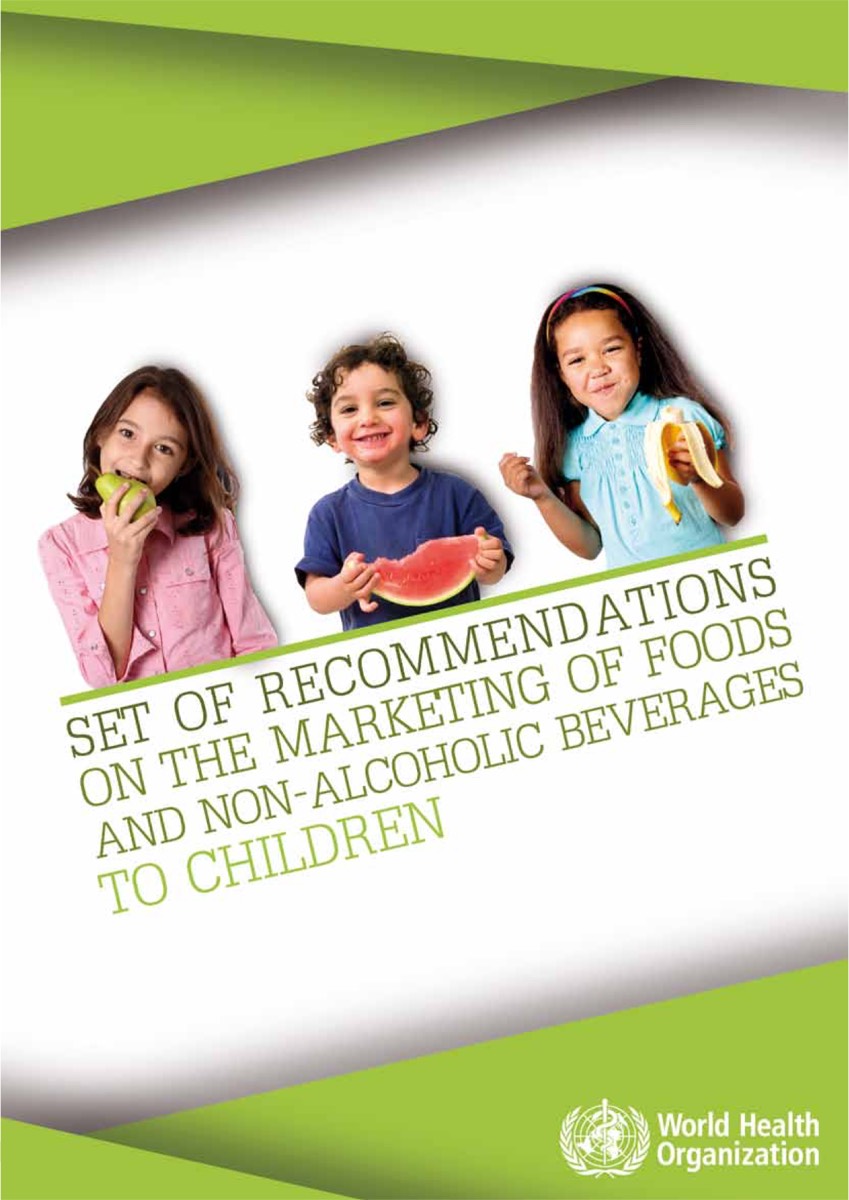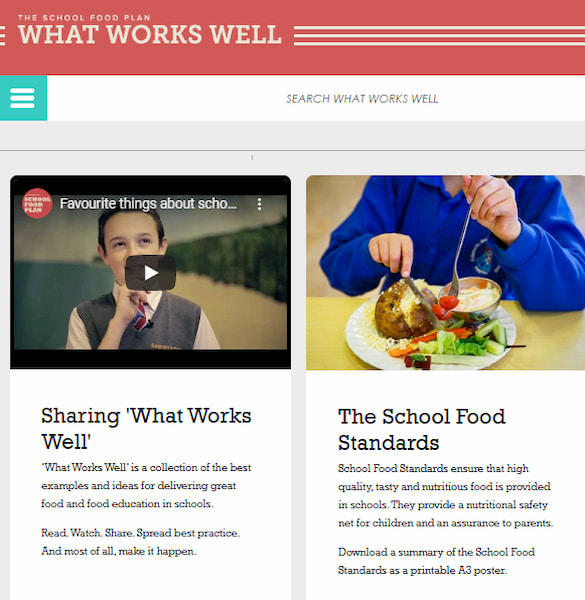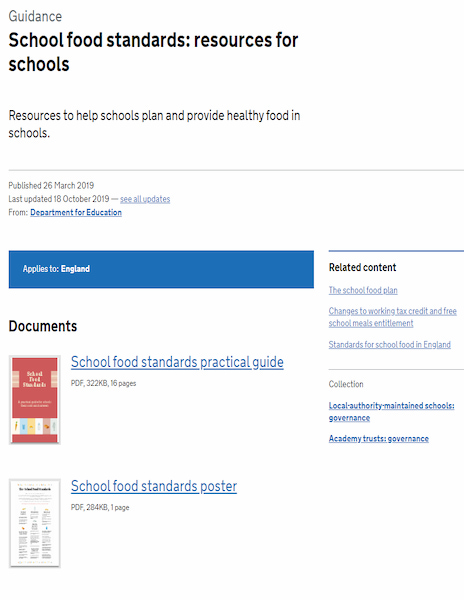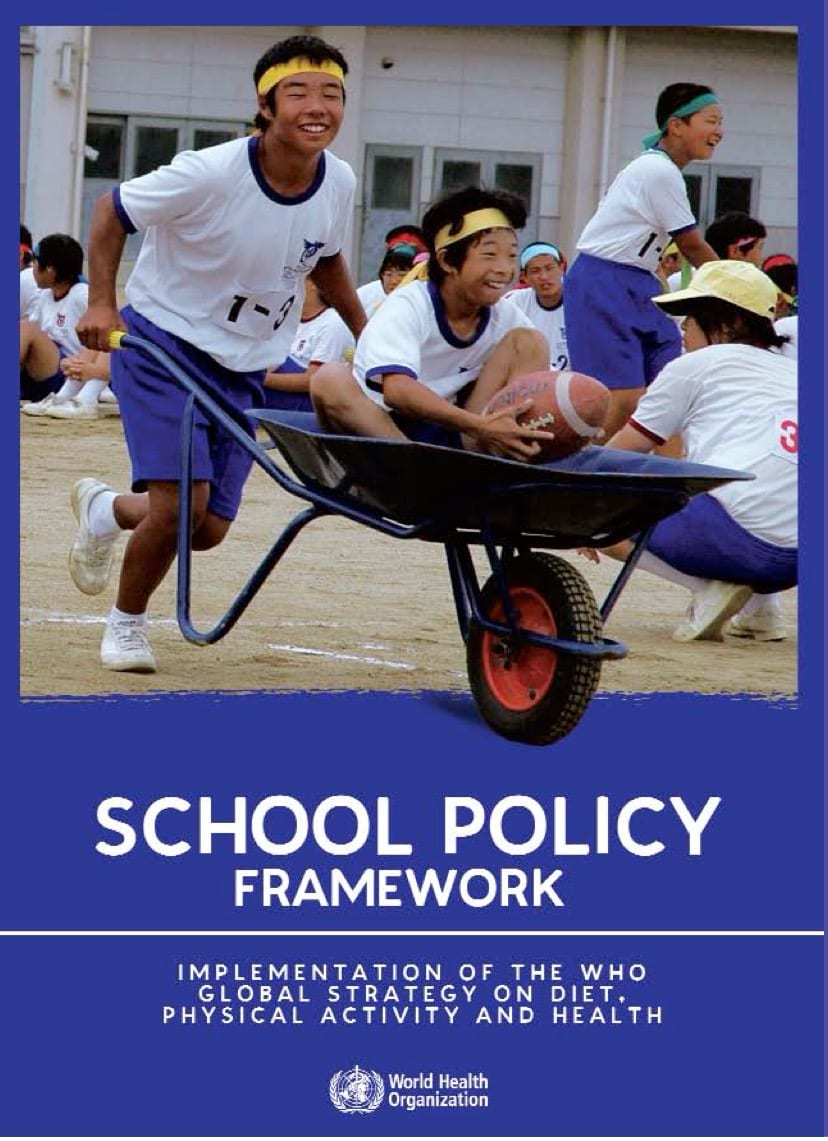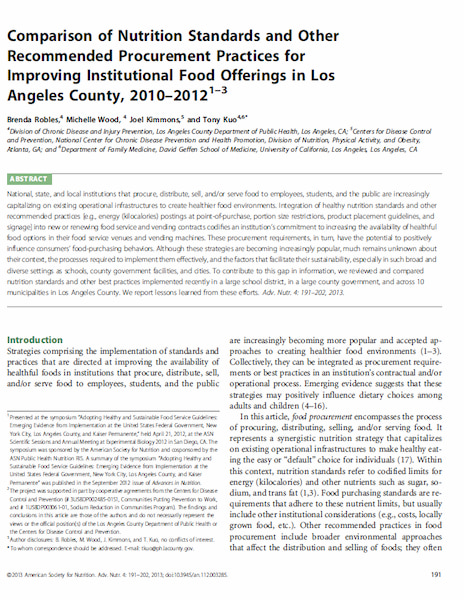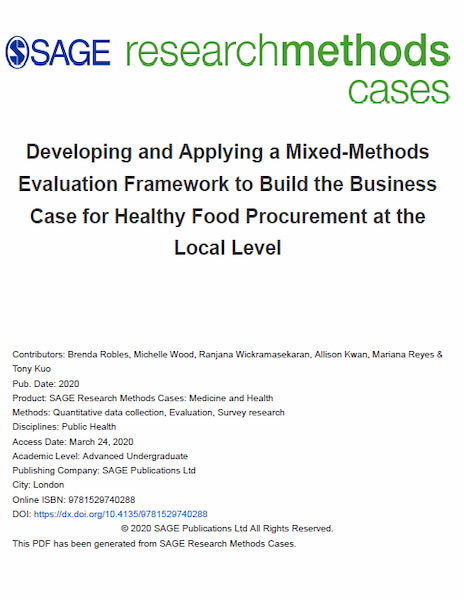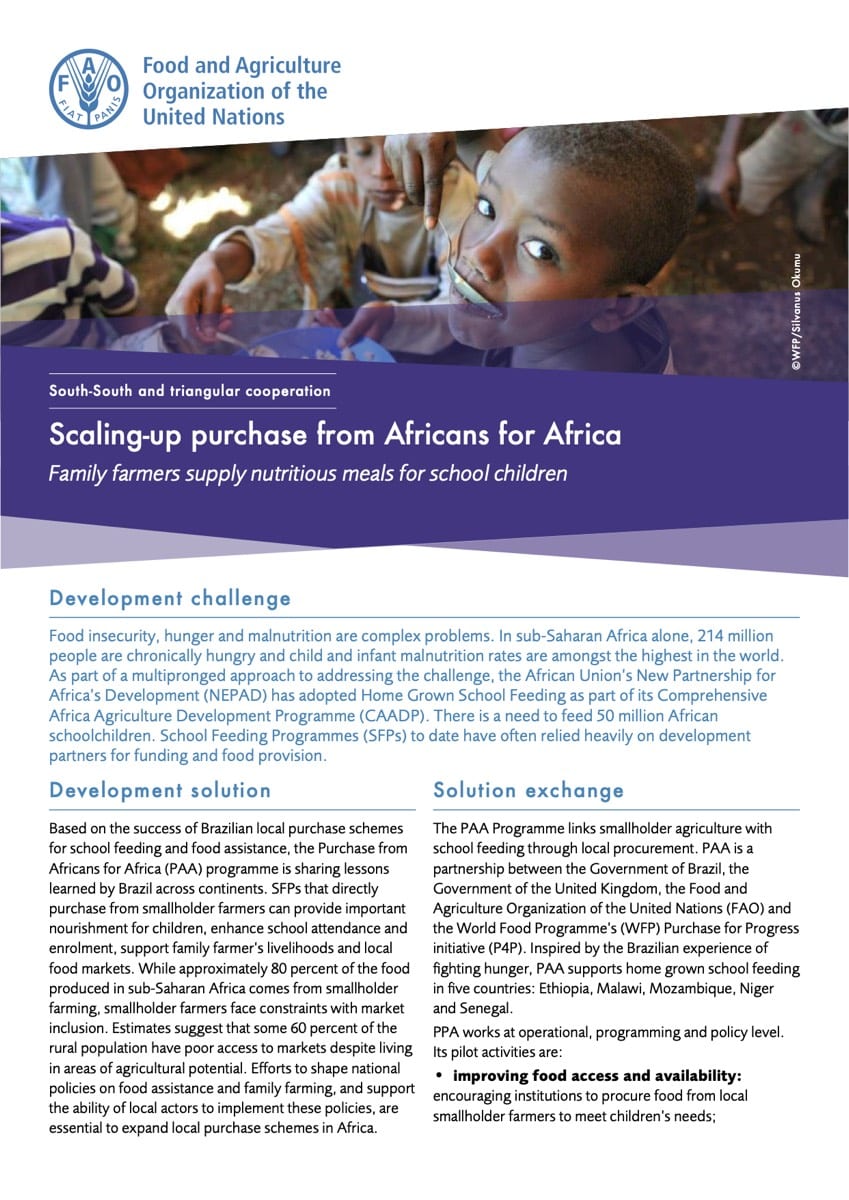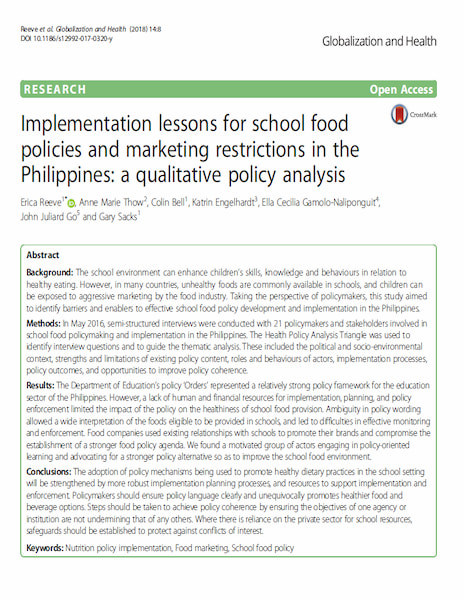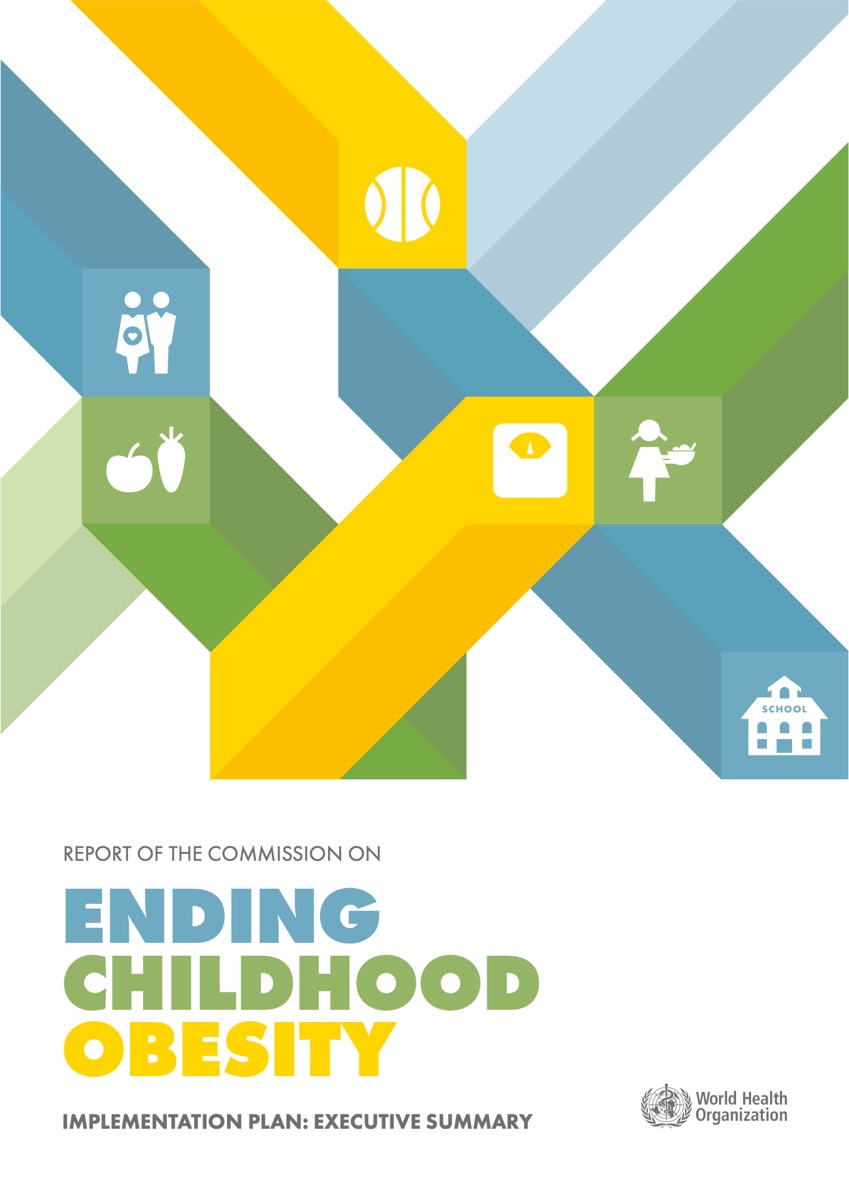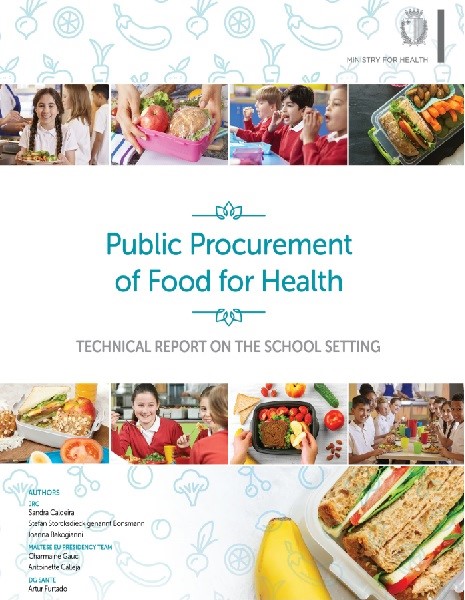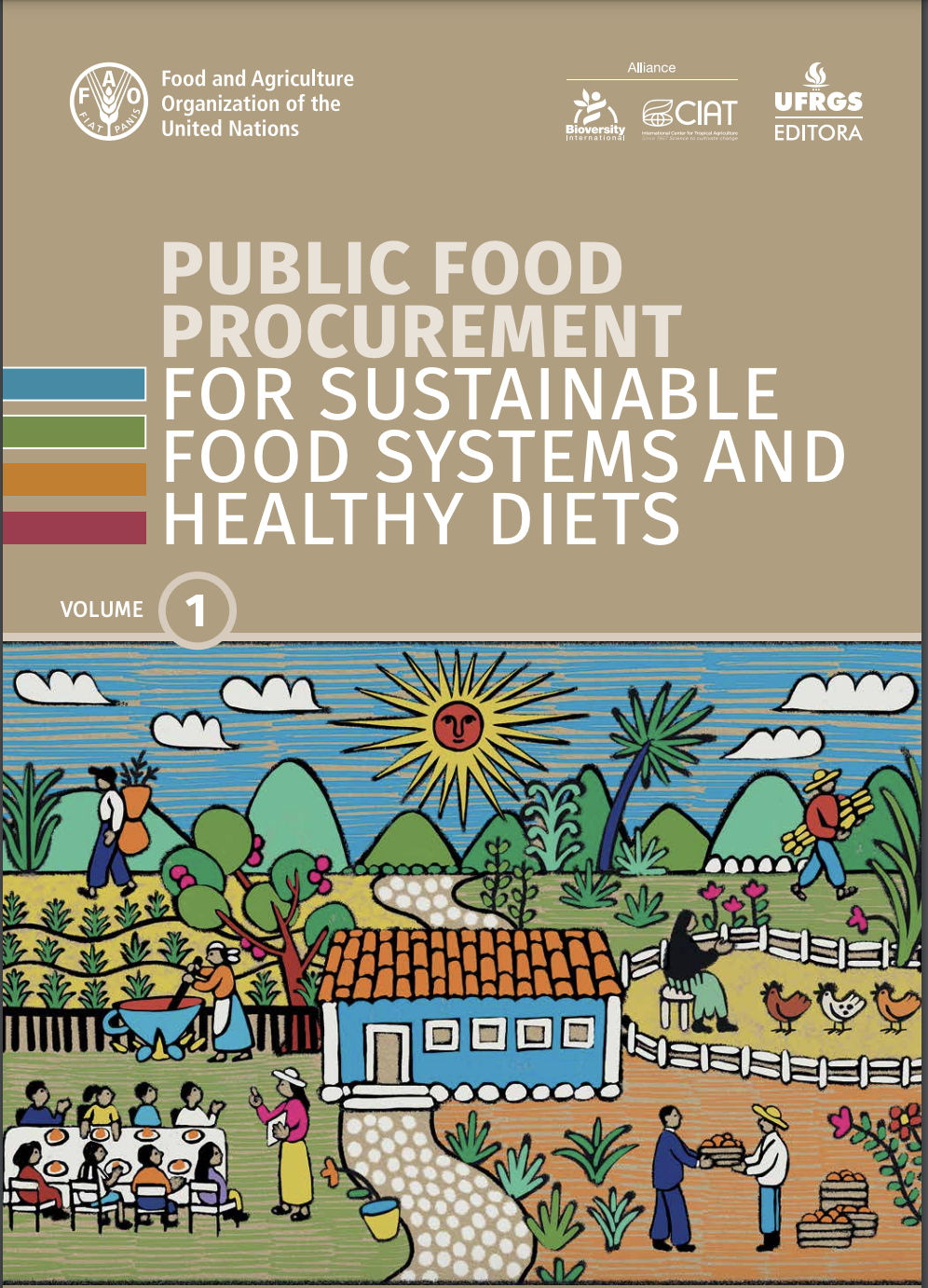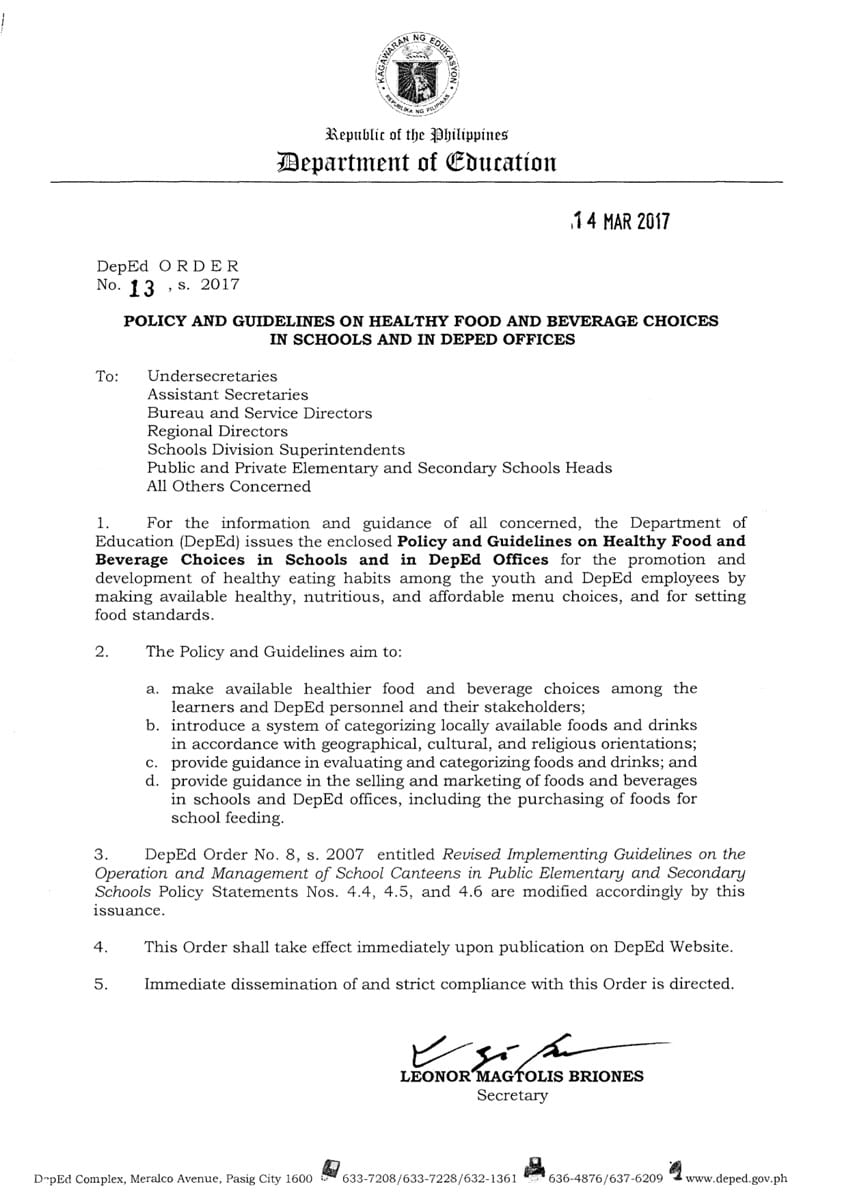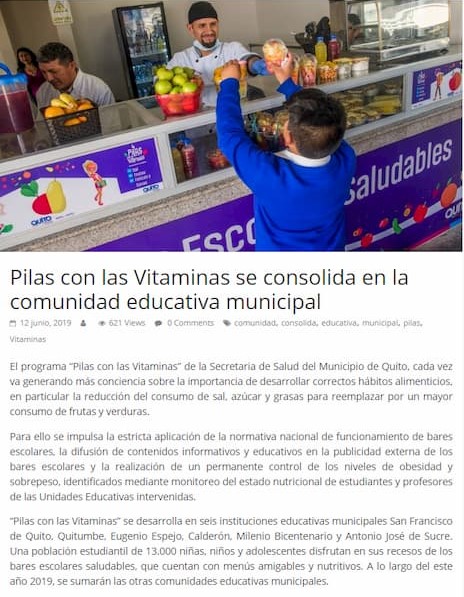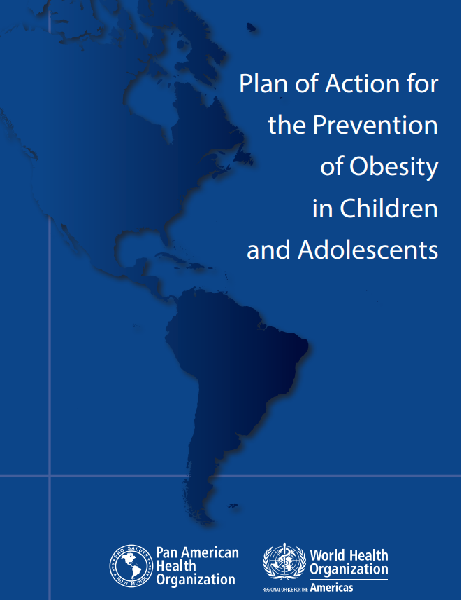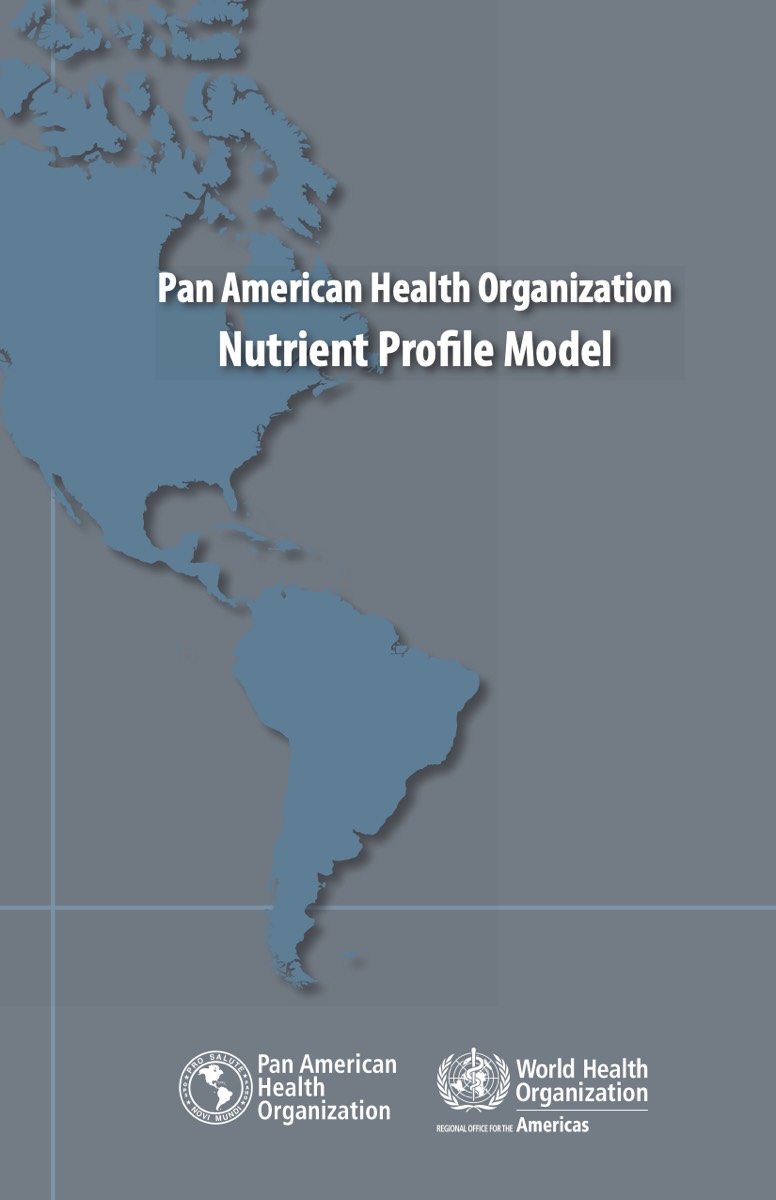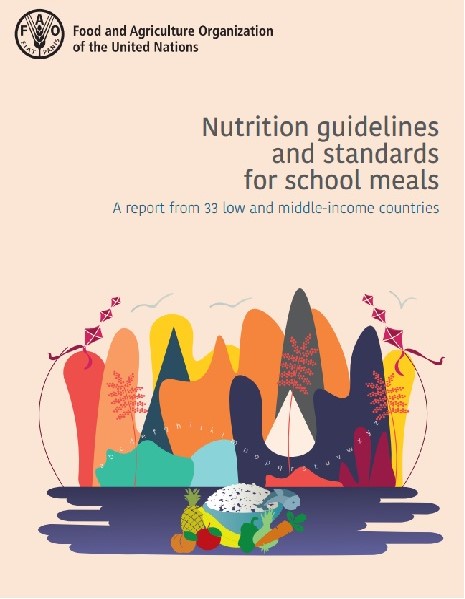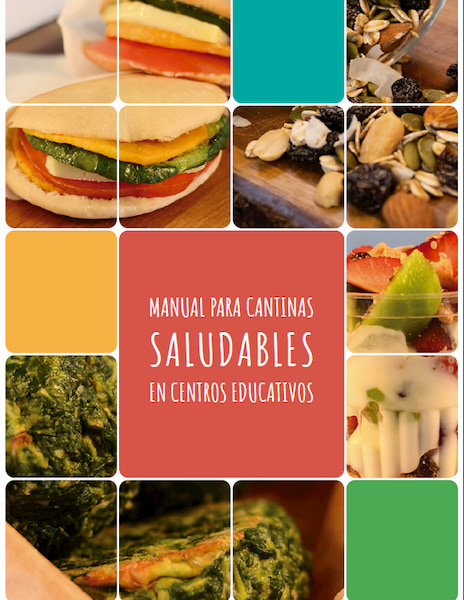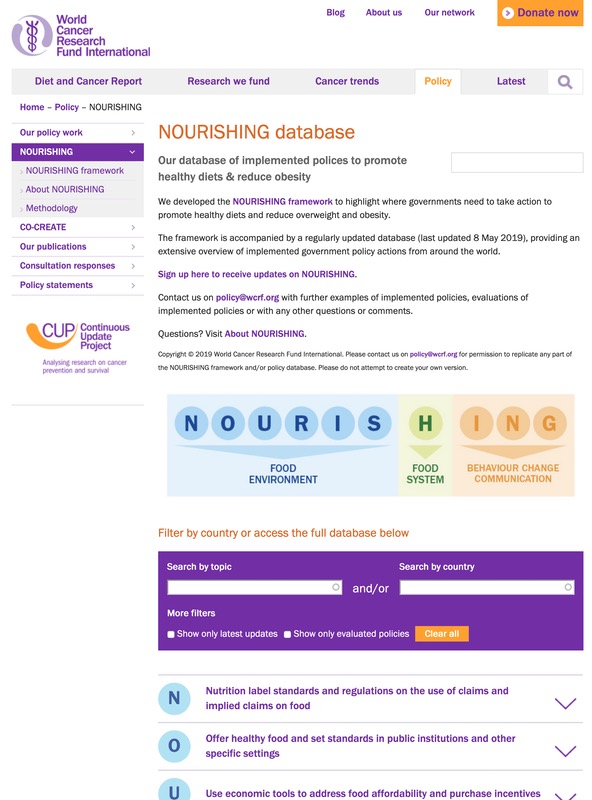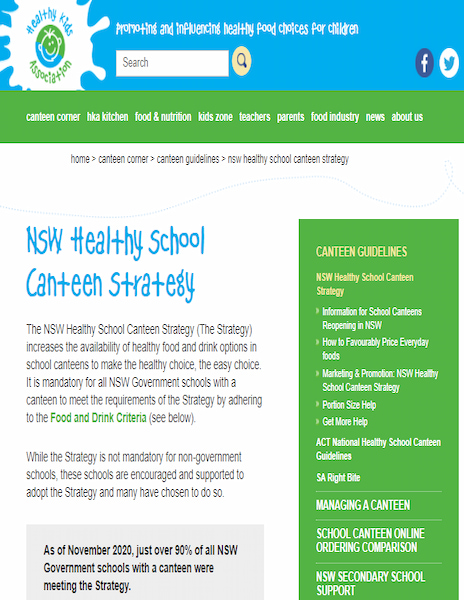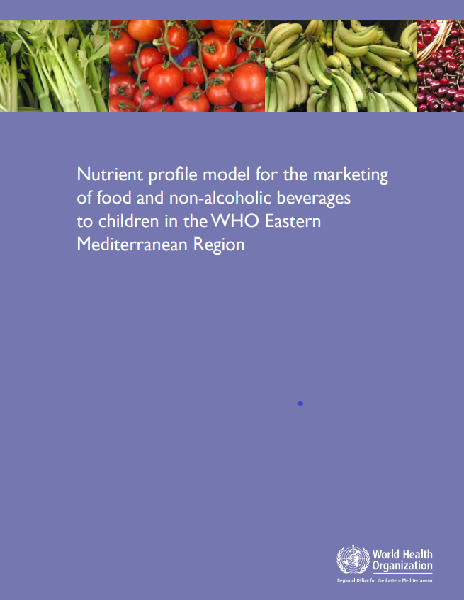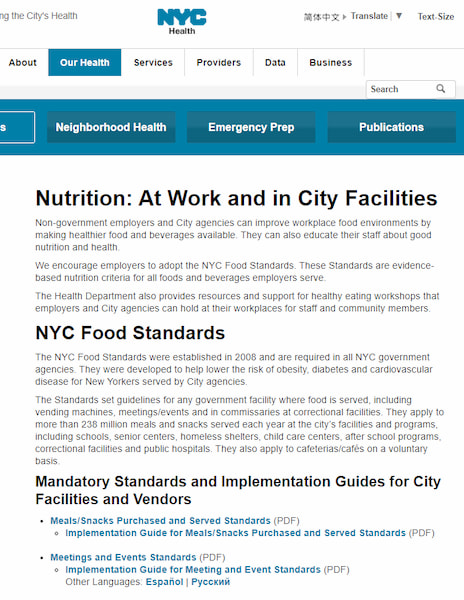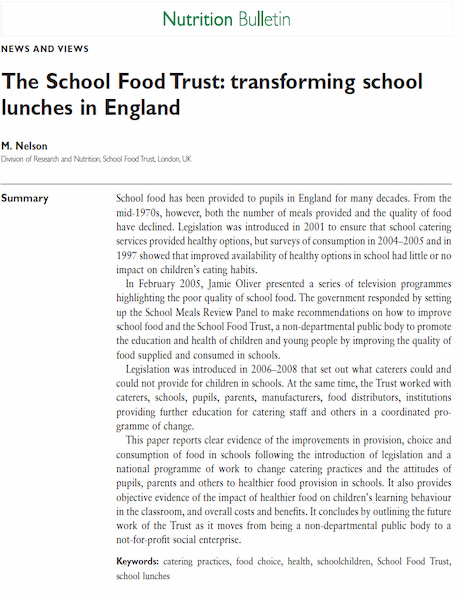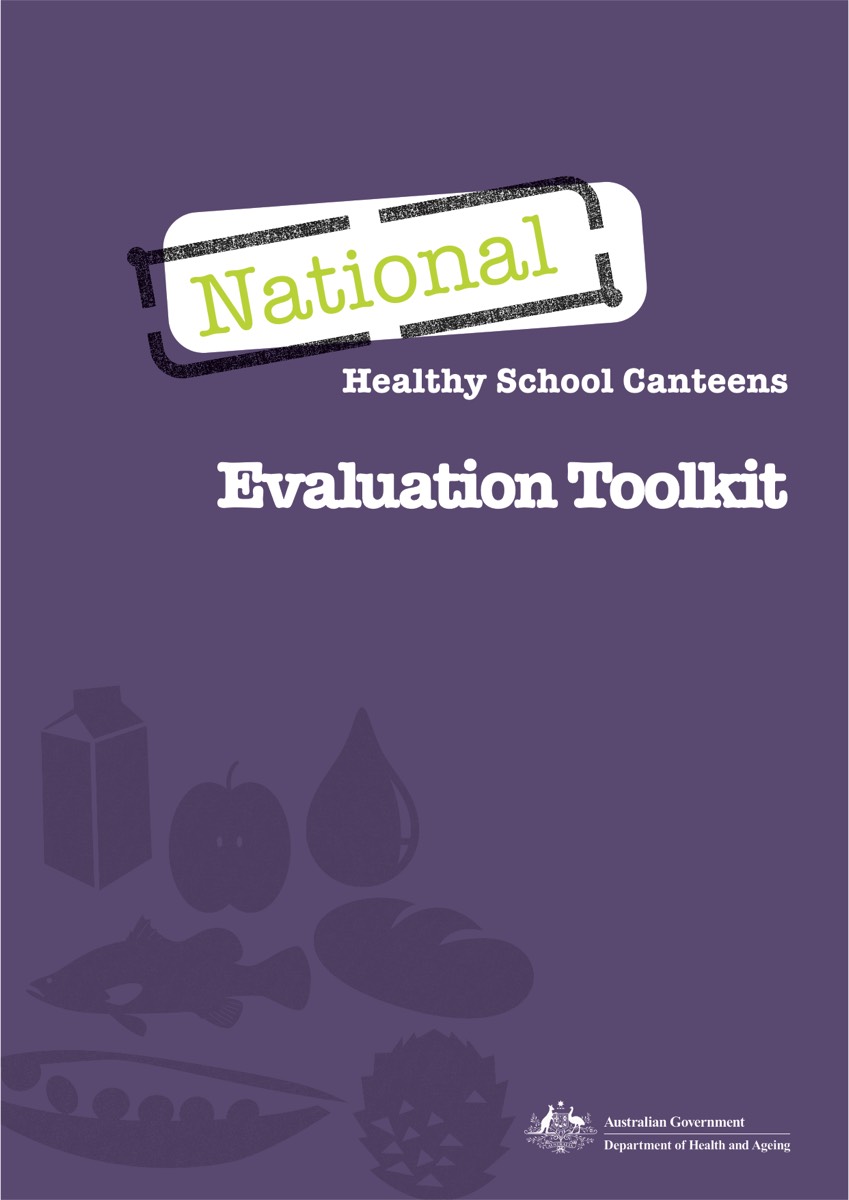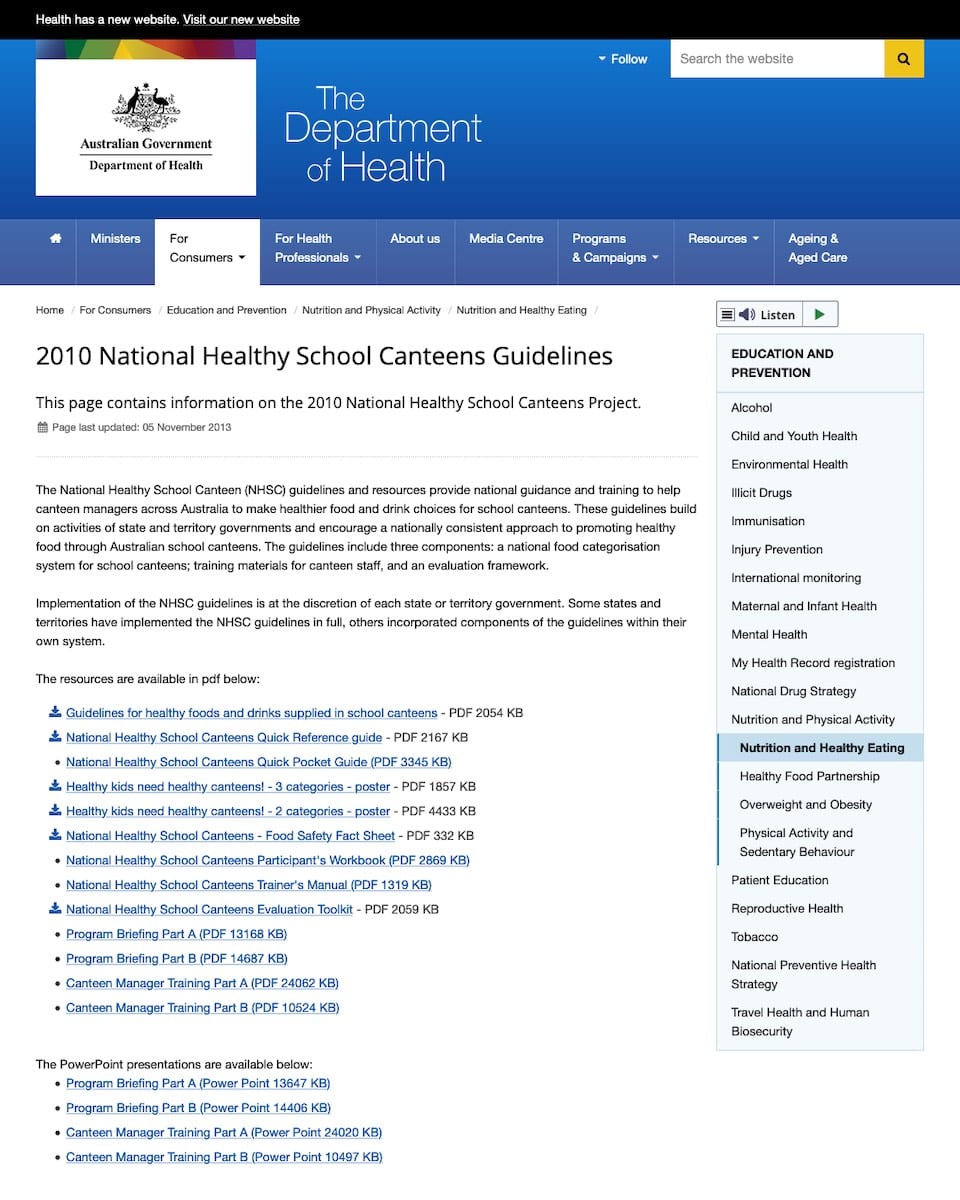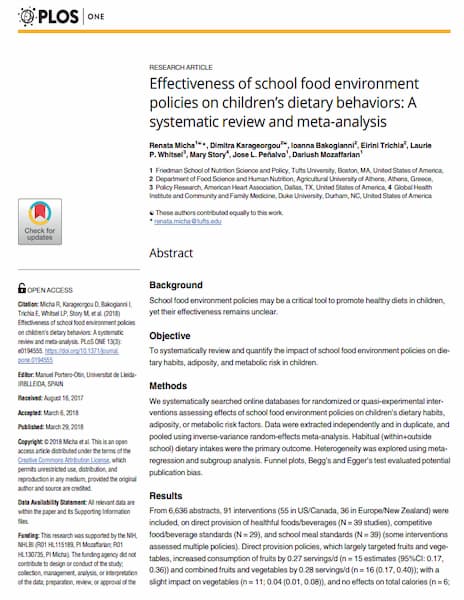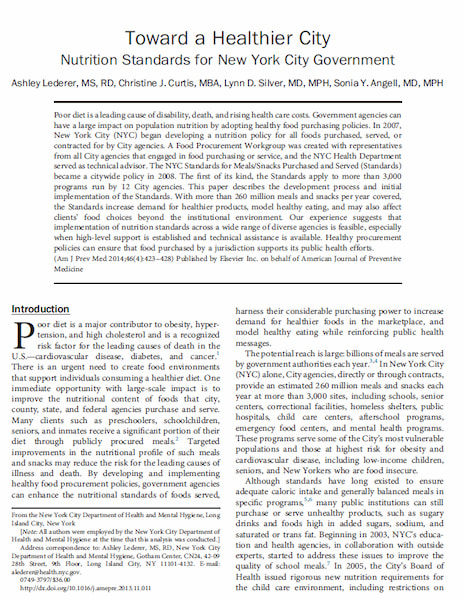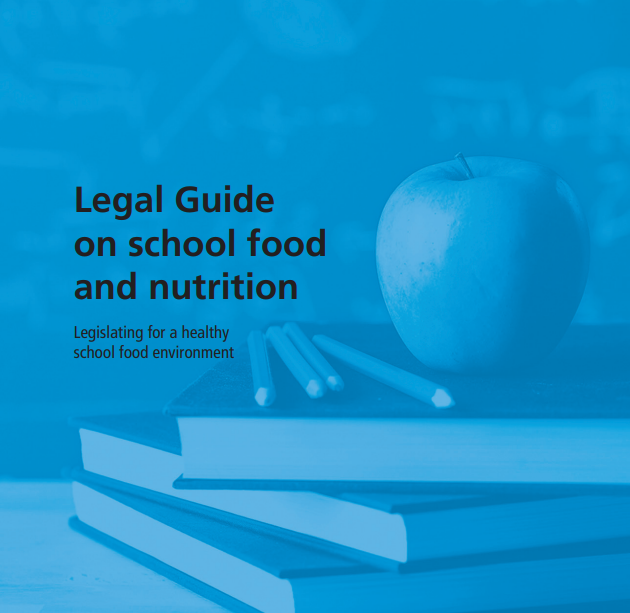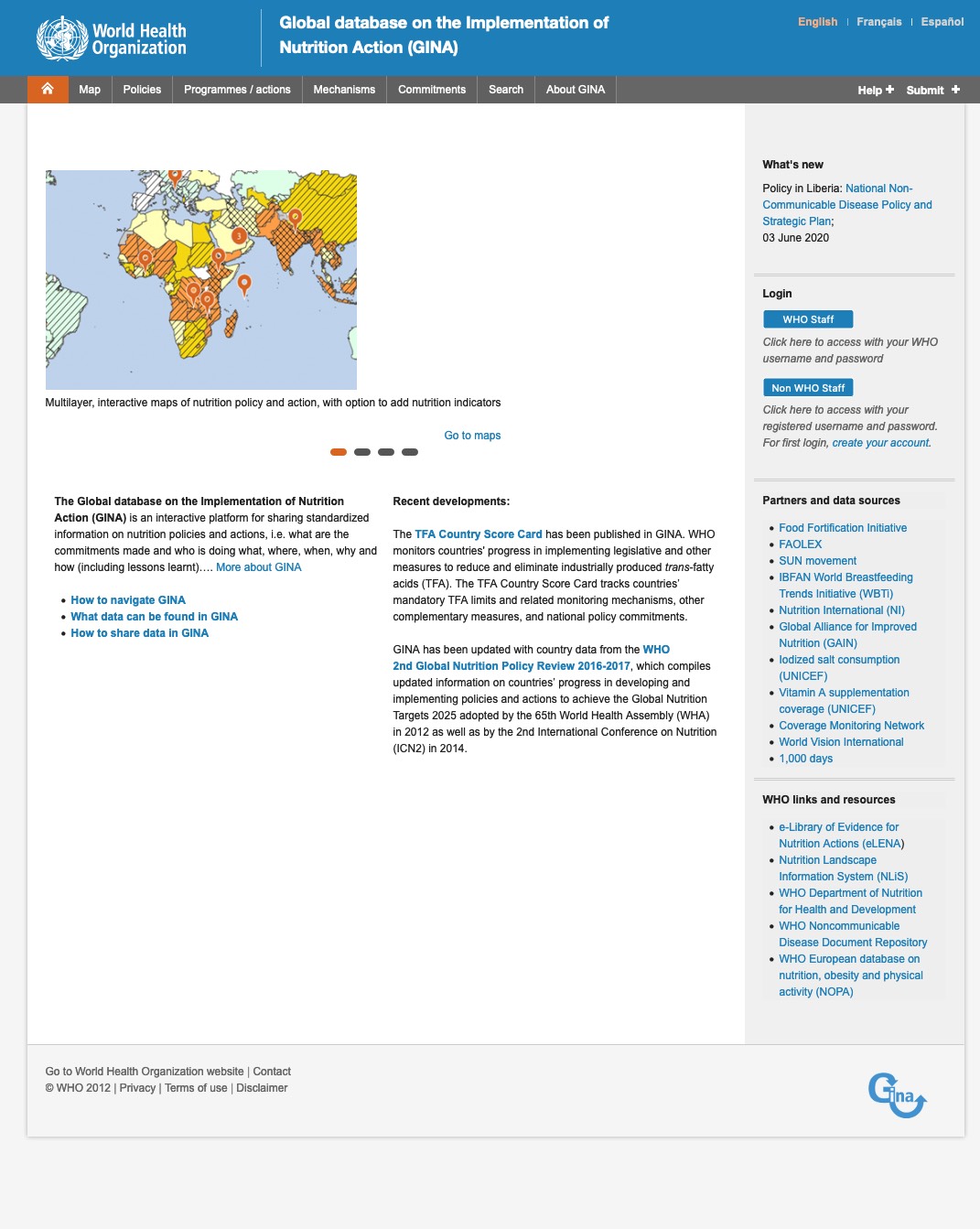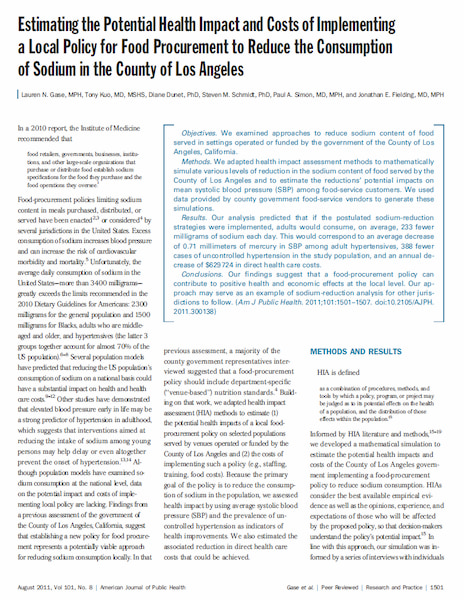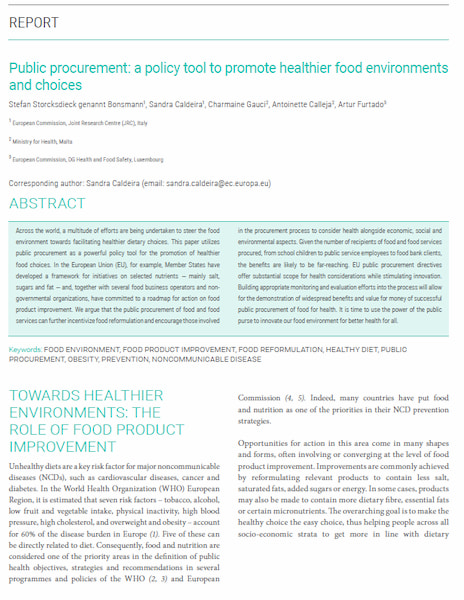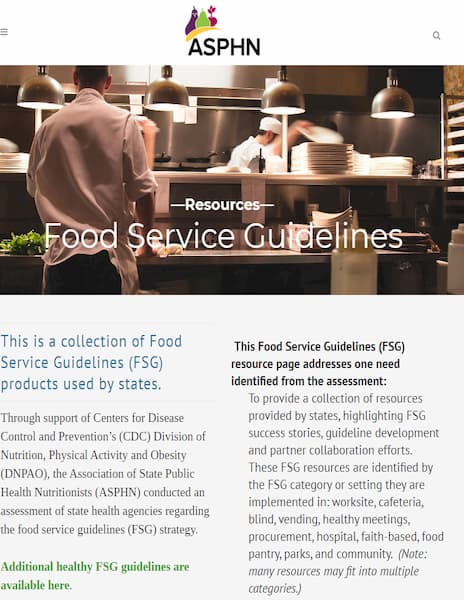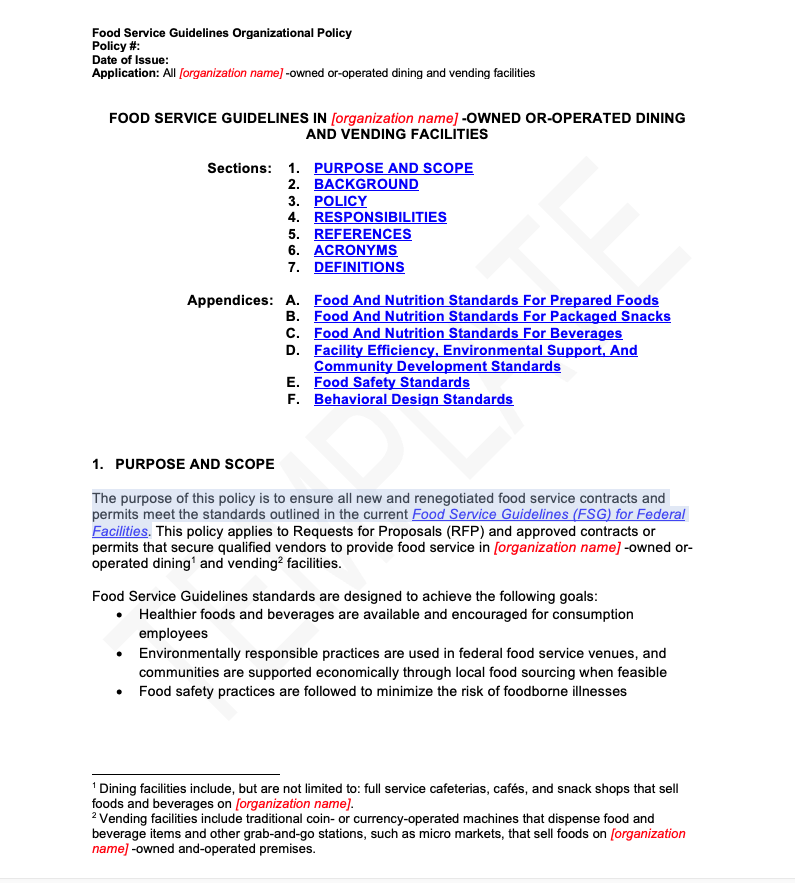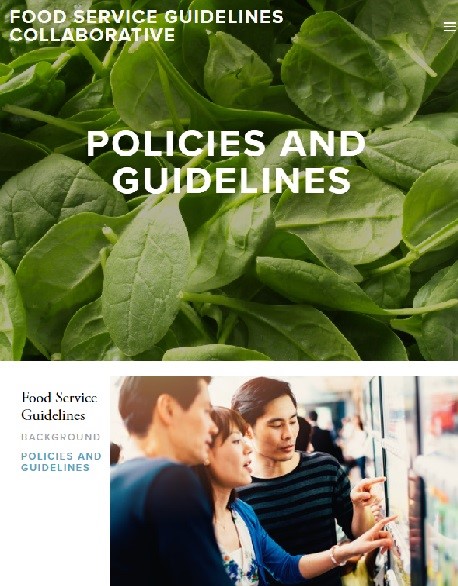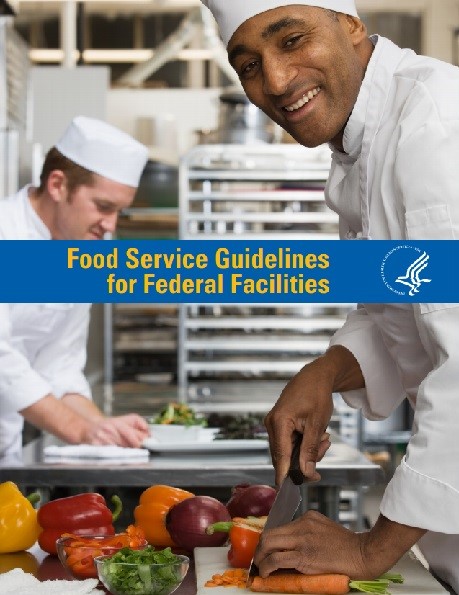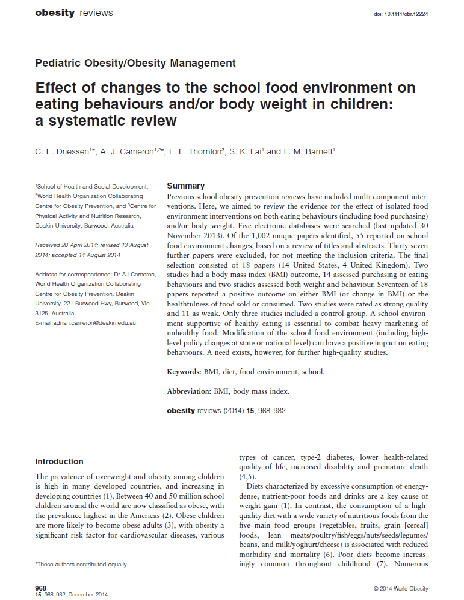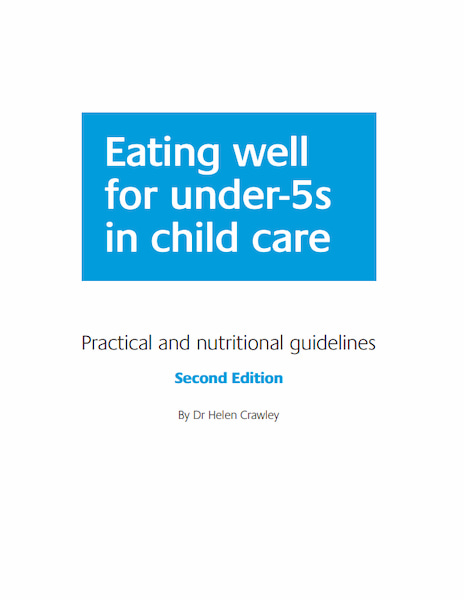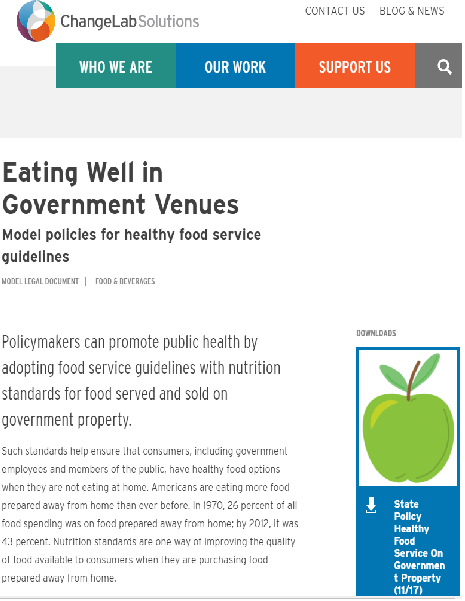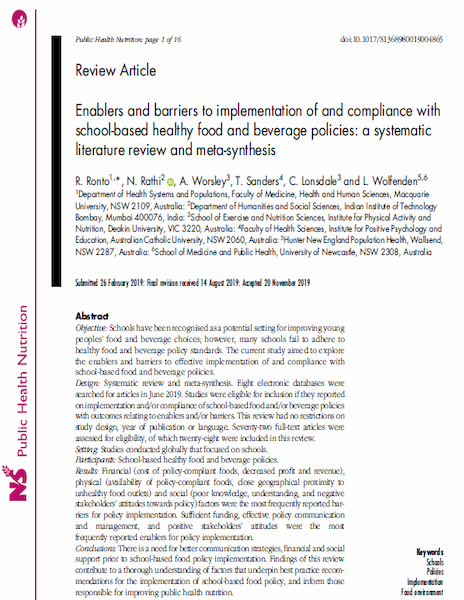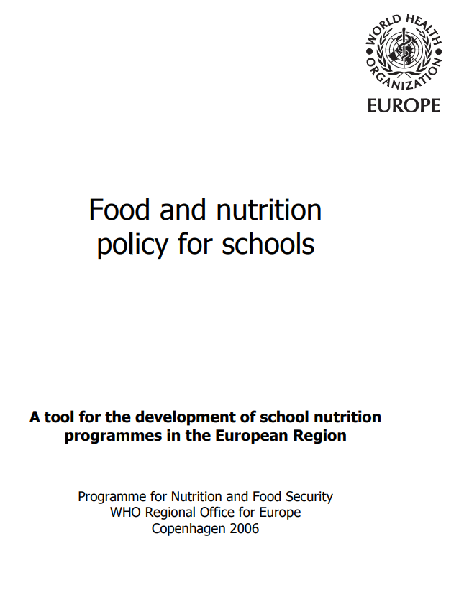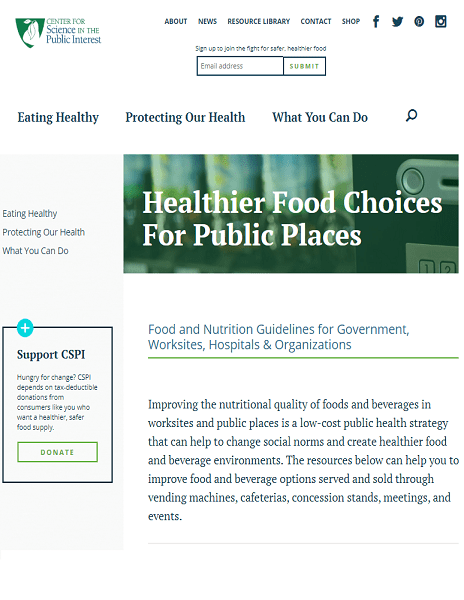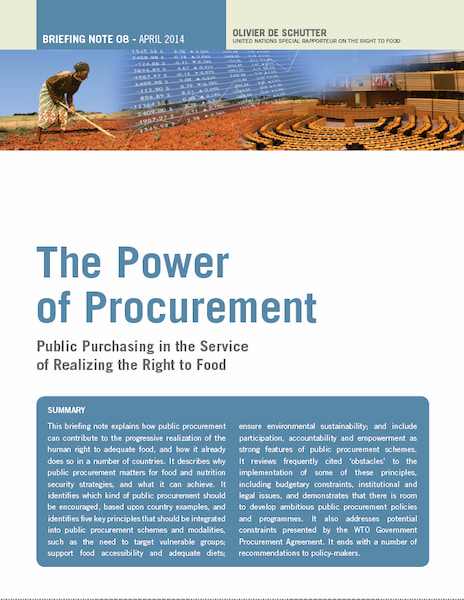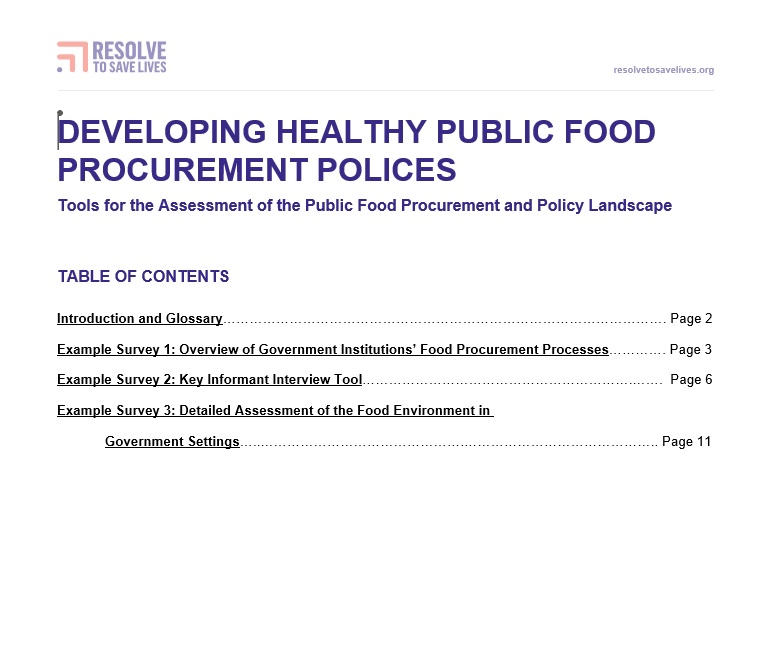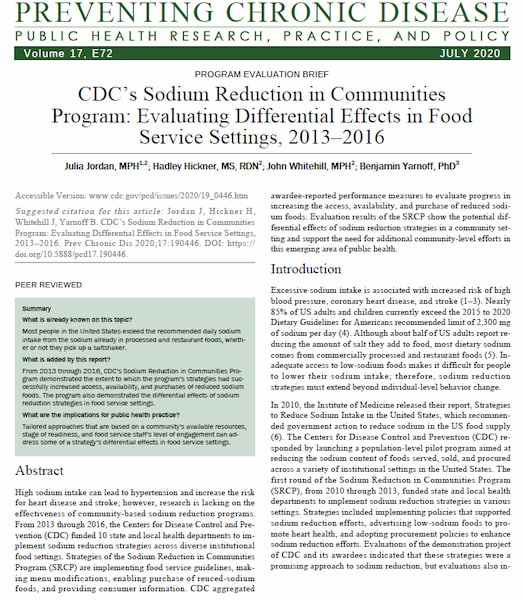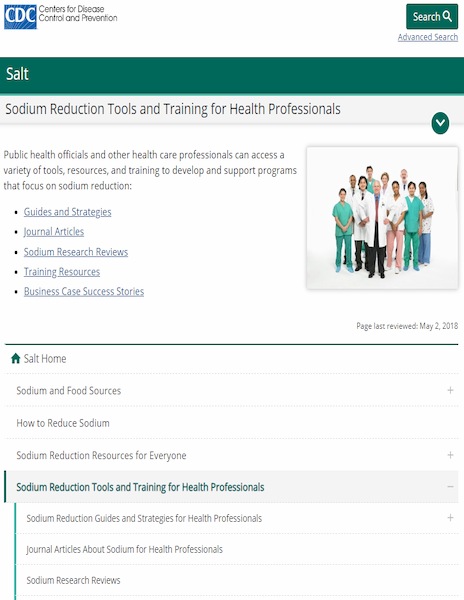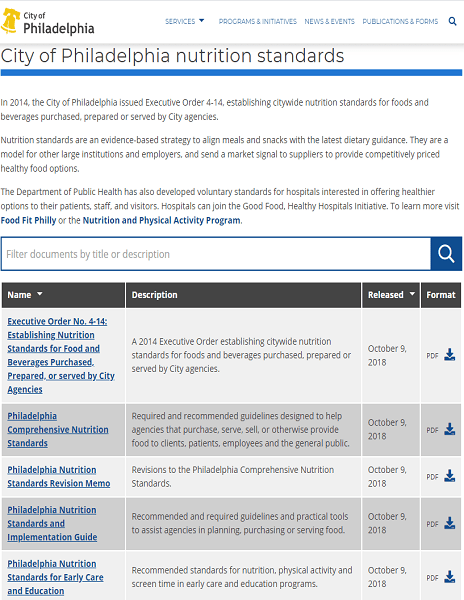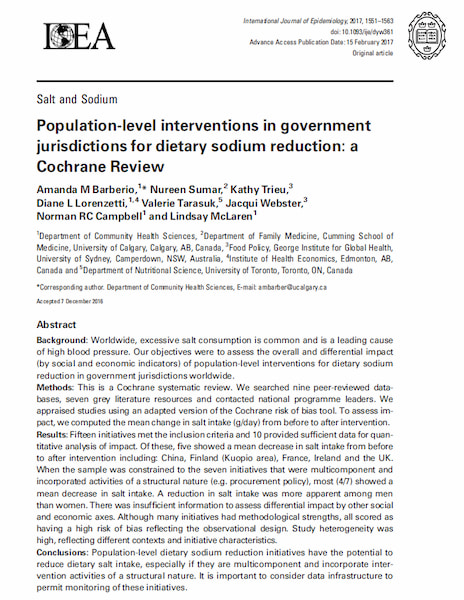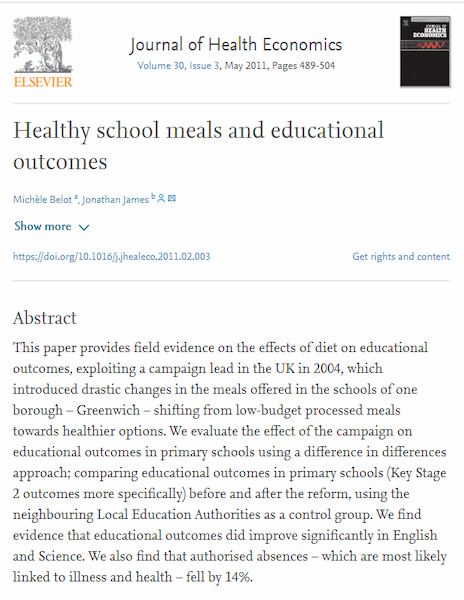HEALTHY PUBLIC FOOD PROCUREMENT AND SERVICE RESOURCE LIBRARY
Healthy public food procurement and service (PFPS) policies set healthy nutrition standards for food and beverages served and sold in public settings where people live, work, learn, and play. These public settings often provide food to a large portion of a country’s population, presenting an important opportunity to enable healthy diets and improve public health by making healthier foods more available.
In 2021, the World Health Organization published the Action framework for developing and implementing public food procurement and service policies for a healthy diet, which provides guidance on developing best practices policies for healthy public food environments. This resource, along with other resources developed by partners around the world, are provided in this library.
You’ve been redirected. LINKScommunity.org is now part of resolvetosavelives.org.
Key Resource
Nutrition standards guide developed by Resolve to Save Lives that governments can use to procure healthy foods and beverages purchased, served and/or sold in government settings such as schools, public hospitals, childcare or child development facilities, correctional facilities and government workplaces.
Factsheet developed by Resolve to Save Lives on how and why front of package labels can be used to encourage healthy diets.
Includes resources to support transitioning to healthier school canteens for school leaders, canteen managers, parents, and communities.
Key Resource
Core principles, benefits and resources for implementing healthy food procurement and service policies.
Best practice guidelines for health facilities to use for cafes/cafeterias, vending machines, convenience stores/newsagents, retail premises, and catering.
Standards for food and drinks available to staff, volunteers, and visitors for ACT Health premises; links to Healthy Food and Drink Choices and Vending Machine Management Policies.
Resources to assist schools develop healthy canteens. The website includes links to the policy, evaluating changes, food planners, and educational materials.
Describes healthy food guidelines and implementation resources for hospital food venues, including patient menus, cafeterias, coffee carts, kiosks, vending and gift shops.
Includes links to vending machine data collection tools and checklist for meetings and catered meals.
Model bill to expand healthy choices for government employees and in government institutions.
Synthesis of evidence and consensus conference to inform further policy action on healthy food procurement.
Describes school feeding programs in Brazil. Scientific article on school nutrition programs: Sidaner E, Balaban D, et al. The Brazilian school feeding programme: an example of an integrated programme in support of food and nutrition security. Pub Health Nutr. 2013;16(6):989-94.
Reviews the impact of the national law banning sales of competitive food and beverages in schools, based on Chile’s Law of Food Labeling and Advertising. Results show that availability of foods exceeding cutoffs decreased from 90.4% in 2014 to 15.0% in 2016 after policy implementation.
Guide for administrators of school stores and cafeterias to implement the criteria laid out in the national policy for schools. View the technical standards, Implementation Guide (all in Spanish) and summary of the policy on GINA (English).
Describes three methods of evaluating the implementation of dietary guidelines in schools in Slovenia: (i) a cross-sectional survey, (ii) an indicator-based evaluation of menu quality; and (iii) a five day weighted food record of school lunches (output evaluation). The multi-level evaluation suggests that some differences in implementation are attributed to school characteristics; system changes may improve implementation.
Resources include a description of nutrition principles of healthier catering and a toolkit for serving older people in residential care
Guidelines to help workplaces, hospitals and health services, parks, and sporting centers provide healthy foods and drinks.
Standards for foods and beverages served and sold in Malaysian schools. News article on implementation of nutrition standards: Rajaendram R. Ensuring children chomp on healthy treats. The Star Malaysia. 2018 Jan 21. Education.
India’s regulation including restrictions on the advertising, marketing, or selling of food products high in saturated fat or trans-fat or added sugar or sodium on school campuses or to school children in an area within fifty meters from the school gate in any direction.
Describes program criteria and support available for schools.
Website describes Initiative, which links school feeding programs with local smallholder farms to provide food for schoolchildren.
Review of current food-based dietary guidelines (FBDG), assessing the similarities and differences in key elements across countries
Key Resource
Step-wise framework for monitoring, includes: 1) previous monitoring activities of school food programs, and 2) survey questions for initial assessment.
Key Resource
The policy index measures the extent of implementation of health food environment policies by governments compared to international best practice and includes a module on Food Provision. Scientific article describes in detail: L’Abbe M, Schermel A, Minaker L, Kelly B, Lee A, Vandevijvere S, Twohig P, Sarquera S, Friel S, Hawkes C, et al. Monitoring foods and beverages provided and sold in public sector settings. Obesity Reviews. 2013;14(Suppl. 1):96–107l.
Key Resource
Systematic review of the evidence base for healthy food procurement policies
Case study on the development and implementation of a healthy public food procurement policy
Resource on the benefits of healthy public food procurement and service policies.
This initiative created a framework for addressing the double burden of student ill-health and aims to improve coordination among agencies. Refer to ‘NFSI Component 4: Creating a supportive environment’ in the evidence review.
Describes regional nutrient profile model for use and adaptation when developing policies to restrict food marketing to children.
Singapore government whole-of-government policy introduced in April 2017; the site provides links to the Whole-of-Government (WOG) Healthier Catering Policy and WOG Drinks Policy
Site includes links to WHO nutrition documents, including Healthy Diet factsheet and guidance on sugars, fats, and sodium.
Nutrient thresholds used to implement the set of recommendations on the marketing of foods and non-alcoholic beverages to children.
Nutrient thresholds used to implement the set of recommendations on the marketing of foods and non-alcoholic beverages to children.
Describes how to measure the implementation of the WHO Global Strategy on Diet, Physical Activity, and Health at the country level and proposes a framework and indicators (Logic model, page 5).
Nutrient thresholds used to implement the set of recommendations on the marketing of foods and non-alcoholic beverages to children.
Key Resource
Describes five key elements of a healthy diet.
Key Resource
This paper sets out an approach to measure the implementation of the WHO Global Strategy on Diet, Physical Activity and Health (DPAS) at country level and proposes a framework and indicators for this purpose. The indicators provided in this document should be seen as examples to be used, as appropriate, after adjusting to the country reality. The proposed framework and indicators are intended to provide a simple and reliable tool for Member States. The indicators are also intended to be flexible and adaptable to national circumstances and to take into account existing as well as planned activities in surveillance and monitoring.
Describes how healthier changes were successfully made in a group of Philadelphia schools and includes specific nutrition standards.
Report on existing hospital food standards, with recommendations on monitoring and further action.
Collection of over 100 recipes that meet the UK’s Government Buying Standards and are suitable for children.
Guidance on what constitutes sustainable healthy diets.
Mandatory product specifications for government agencies; also see: A Plan for Public Procurement: Food & Catering Balanced scorecard (nutrition criteria, page 17).
Part of a series to help policy makers address national food security and nutrition issues; guidance is focused on developing initiatives that support food purchases from small farms.
Describes nutrition standards for schools. Scientific article on implementation of nutrition standards: Lee SK, Park HK, et al. Nutritional standards for energy-dense low-nutrient density foods for children in Korea. Asia Pac J Clin Nutr 2014;23(1):27-33.
Describes joint work to support school feeding programs in Latin America and the Caribbean. Available in Spanish.
Resources to support implementation of healthy food guidelines for county agencies, including evaluation tools, model policies, a vending case study, and guidance for hospitals.
Guide to for food service staff and public health organizations to reduce sodium in food service organizations by drawing upon the experiences gained during the Sodium Reduction in Communities Program (SRCP).
Describes reducing sodium in food service operations in health care facilities owned and operated by B.C. health authorities and lessons learned.
Describes standards to limit sugar, salt, and fat in Israel’s schools and kindergartens.
Study of school meals programs in 16 countries, identifying six areas where there are opportunities for improvement. Logic model on page 23.
Describes the Seychelles’ efforts to utilize schools as sites for improving the nutritional well-being of all school children. Includes an evaluation tool for schools (page 32).
Describes the successes and challenges of the Brazil school feeding program from 2003-2011, finding that local food production, school meals, and nutrition education can be linked and result in improved access to healthier foods.
Describes recommendations for marketing food to children, a complementary action to include in food procurement standards.
Resources for schools to implement healthier food guidance, including a link to the What Works Well RecipeHub.
School food standards, with guidance for administrators, a poster example, and a healthy eating checklist.
Guide for policy makers at national and sub-national level to promote healthy eating and physical activity in schools settings.
Reviews and compares nutrition standards and other best practices implemented recently in a large school district, in a large county government, and across 10 municipalities in Los Angeles County. Includes a framework for creating healthier food environments and steps to adopting and implementing nutrition standards.
Describes an evaluation by the Los Angeles Department of Health conducted with the goal to help institutional foodservice operators grow their business while also improving the nutritional quality of foods served and sold.
Multi-stakeholder initiative by the FAO, World Food Programme, Brazil and the UK, and the governments of each pilot country: Ethiopia, Malawi, Mozambique, Niger and Senegal, to procure food from small farms for schools.
Description of challenges/barriers to consider when implementing procurement policies, particularly within a school setting.
Includes standards (page 18) for food standards for healthy school environments for children and adolescents.
Support for translating national school food standards into food procurement specifications. Includes contract evaluation guidance, scoring grid, and logic model.
This document serves as a discussion of Public Food Procurement as a viable policy for improving national and regional food systems and overall population nutrition.
Describes the policy and guidelines on healthy food and beverage choices in schools and in Department of Education offices.
Initiative to improve the healthfulness of food sold at school canteens, consistent with national policy; includes marketing and branding materials; website in Spanish.
Nutrient thresholds designed for multiple applications, including regulation of marketing, front-of-package labelling, and fiscal policies related to food and beverages.
Key Resource
Results of global survey on school meals; report identifies key aspects to consider when developing or updating school meal program standards.
Implementation guide for implementing school nutrition standards. Training materials, for food handlers are also available. (Spanish)
Key Resource
Searchable database of implemented policies to promote healthy diets and reduce obesity. Use Section O (Offer healthy food and set standards in public institutions and other specific settings) to search for public food procurement examples.
This website contains a variety of
resources for schools implementing the strategy, including webinars, guidance
on how to develop menus, sample recipes, portion size guides, etc., as well as
a link to the
Food and Drink Criteria booklet summarizing the criteria and providing implementation guidance.
Nutrient thresholds for the marketing of food and non-alcoholic beverages to children.
Describes comprehensive standards that apply to all food purchased and served by city agencies, including specific standards and implementation guides, along with communications materials.
Reports evidence of the improvements in provision, choice and consumption of food in schools following the introduction of legislation and a national programme of work to change catering practices and the attitudes of pupils, parents and others to healthier food provision in schools. It also provides objective evidence of the impact of healthier food on children’s learning behaviour in the classroom, and overall costs and benefits.
Toolkit includes logic model, research framework, and focus group questions to guide process evaluation and short-term impact evaluation.
Website describes guidelines and resources to help canteen managers across Australia offer healthier food and drink options.
Systematic review includes 12 studies evaluating school meal standards implemented in the US, Canada, or UK, which were found to: increase fruit intake, reduce total fat, saturated fat, and sodium (but not total calories), and decrease BMI (although other adiposity measures evaluated were unchanged).
Describes the development and implementation of required nutrition standards across all New York City agencies that purchase, prepare and/or serve food.
Provides practical information and guidance for developing or revising national legal frameworks related to school food and nutrition.
Searchable database of nutrition programs, country adaptations and lessons learnt.
Uses health impact assessment methods to simulate levels of reduction in the sodium content of food served by Los Angeles County. Analysis predicts that adults would consume, on average, 233 fewer milligrams of sodium each day, if specific food procurement sodium strategies were implemented and models impact on blood pressure, cases of uncontrolled hypertension, and decrease in health costs.
Proposes that the public procurement of food can incentivize food reformulation; urges consideration of economic, social, and environmental aspects of procurement. Includes examples of EU procurement directives.
Links to U.S. city and state initiatives, including for worksites, cafeterias, vending, meetings, hospitals, faith-based organizations, and community organizations. Includes resources to train vendors
Key Resource
A template for organizational food policy guidelines adapted from the CDC
Resources that support implementation of the US federal nutrition standards in public places.
Standards for food, nutrition, facility efficiency, environmental support, community development, food safety and behavioral design for use in food service concession and vending operations.
Database of food-based dietary guidelines for over 100 countries and regions.
Reviews the evidence for the effect of isolated food environment interventions on both eating behaviors (including food purchasing) and/or body weight (all examples from US/UK). Seventeen of 18 papers reported a positive outcome on either BMI (or change in BMI) or the healthfulness of food sold or consumed.
Guide on nutrient-based standards and menu plans for children under 5, with implementation guidance.
Key Resource
Model policies for policymakers. Website links to resources on creating healthy food service on government property and an infographic on buying food for health and equity.
This study explores the enablers and barriers to effective implementation of and compliance with school-based food and beverage policies from countries around the world.
Recommendations on how schools can best promote health through offering education and practice of good nutrition.
Resources for improving food and beverage options for vending machines, cafeterias, concession stands, meetings, and events; includes messaging tips, model policies, and implementation resources.
Provides an argument for: sourcing preferentially from small-scale food producers, guaranteeing fair wages and prices along the food supply chain, nutrition standards, sourcing locally whenever possible and expecting suppliers to produce food sustainably, increasing participation and accountability in the food system.
This tool provides example surveys for capturing key aspects of the food procurement and policy landscape. Example surveys include: 1) Overview of Government Institutions’ Food Procurement Processes; 2) Key Informant Interview Tool; 3) Detailed Assessment of the Food Environment in Government Settings
Evaluation results on sodium reduction of CDC-funded state and local health departments implementing policies including food standards among institutional food settings.
Includes links to implementation and training guidance for implementing sodium reduction in foodservice settings.
Includes links to the city’s Executive Order, nutrition standards, and implementation resources, such as a menu planning toolkit.
Describes the impact of population-level dietary sodium reduction interventions and concludes that multicomponent initiatives taking a structural approach (such as public procurement policies), have the potential to reduce dietary salt intake.
Provides evidence on the effects of diet on educational outcomes, using a campaign lead in the UK in 2004, which introduced changes in the meals offered in schools – shifting from low-budget processed meals toward healthier options. Educational outcomes improved significantly in English and Science, and authorized absences, which are most likely linked to illness and health, fell by 14%.


